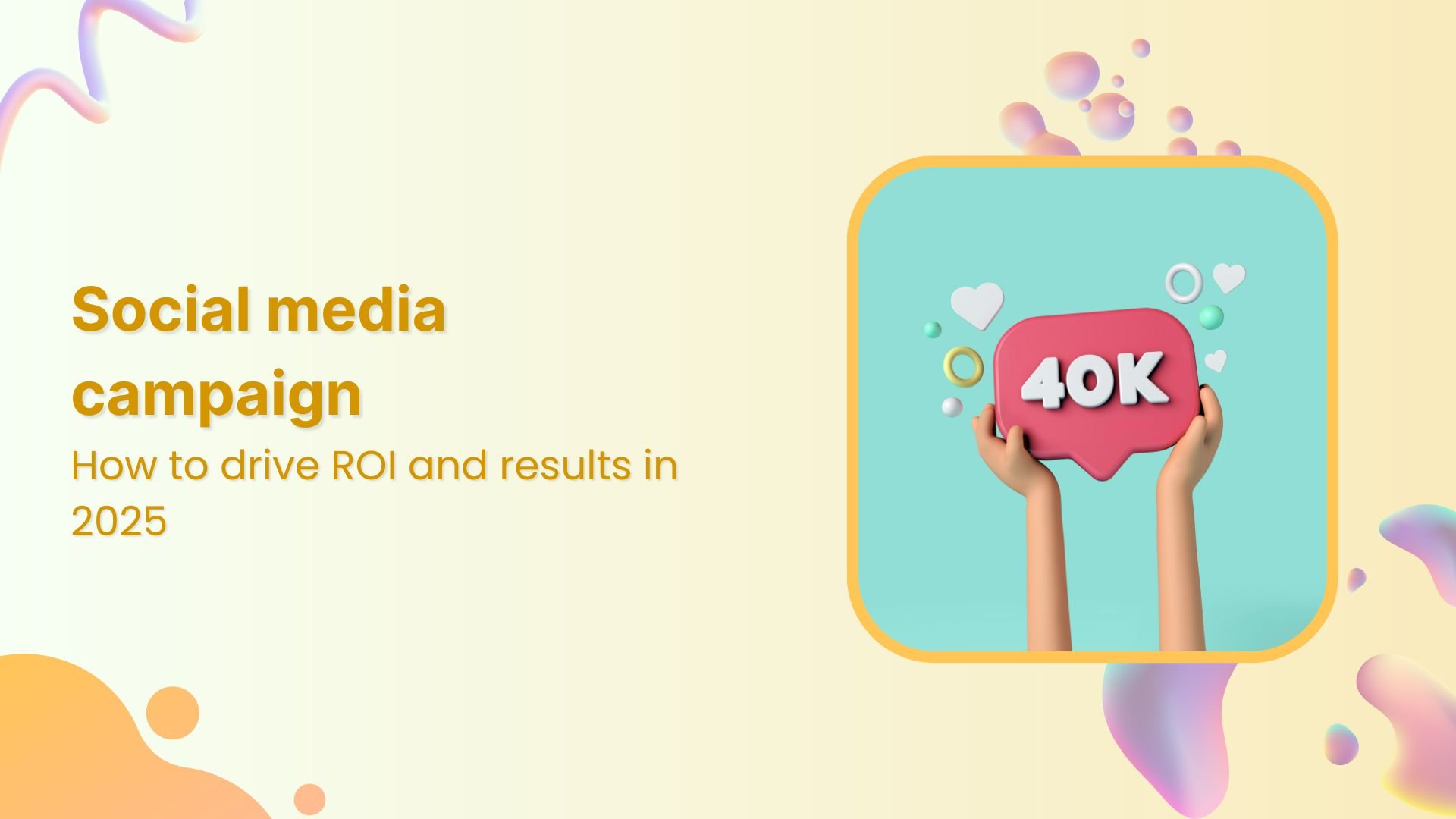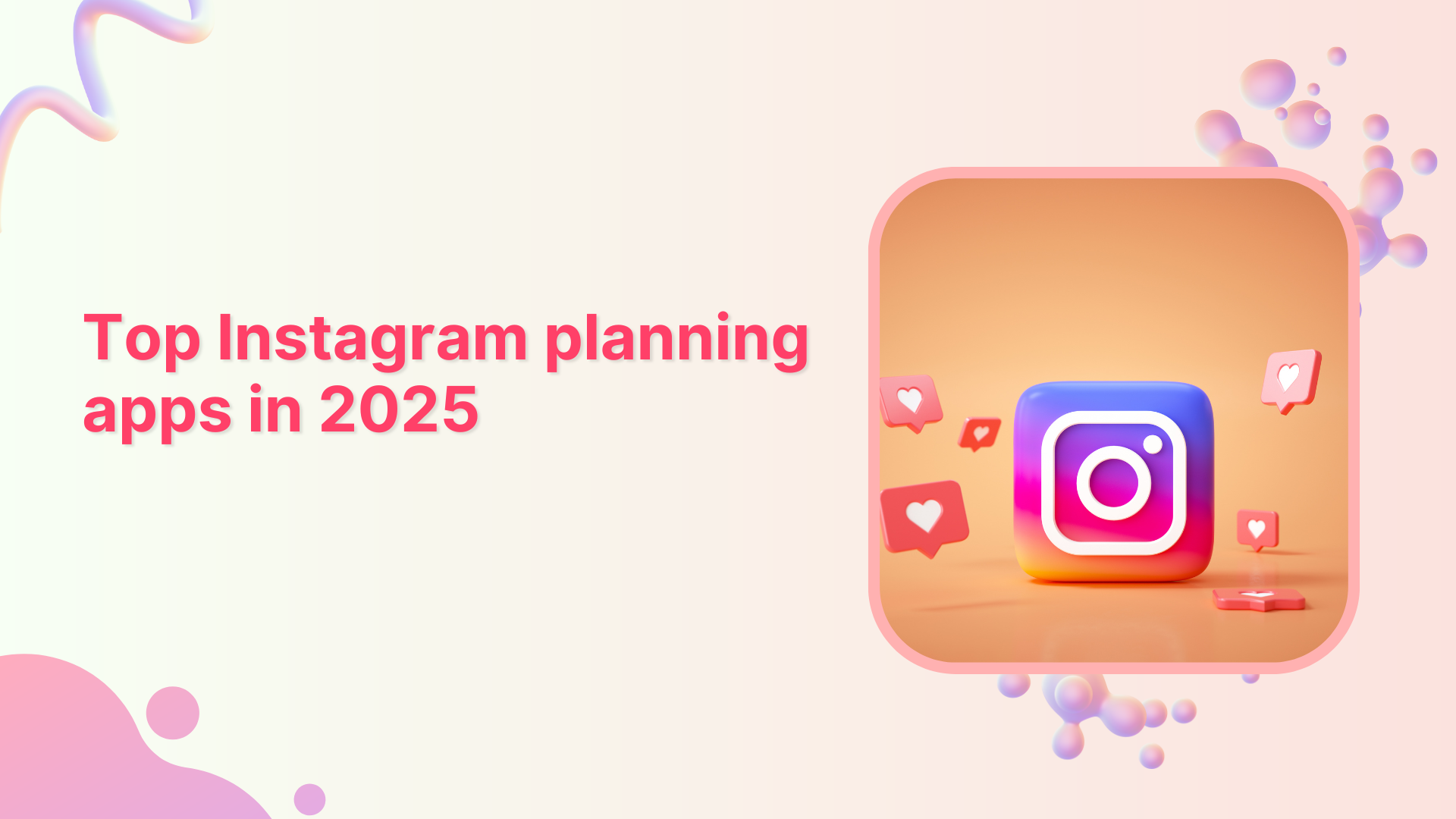Introducing ContentStudio Home with AI Studio built in — for faster, on-brand post creation Try now
How to use Instagram: Beginner’s guide for 2025
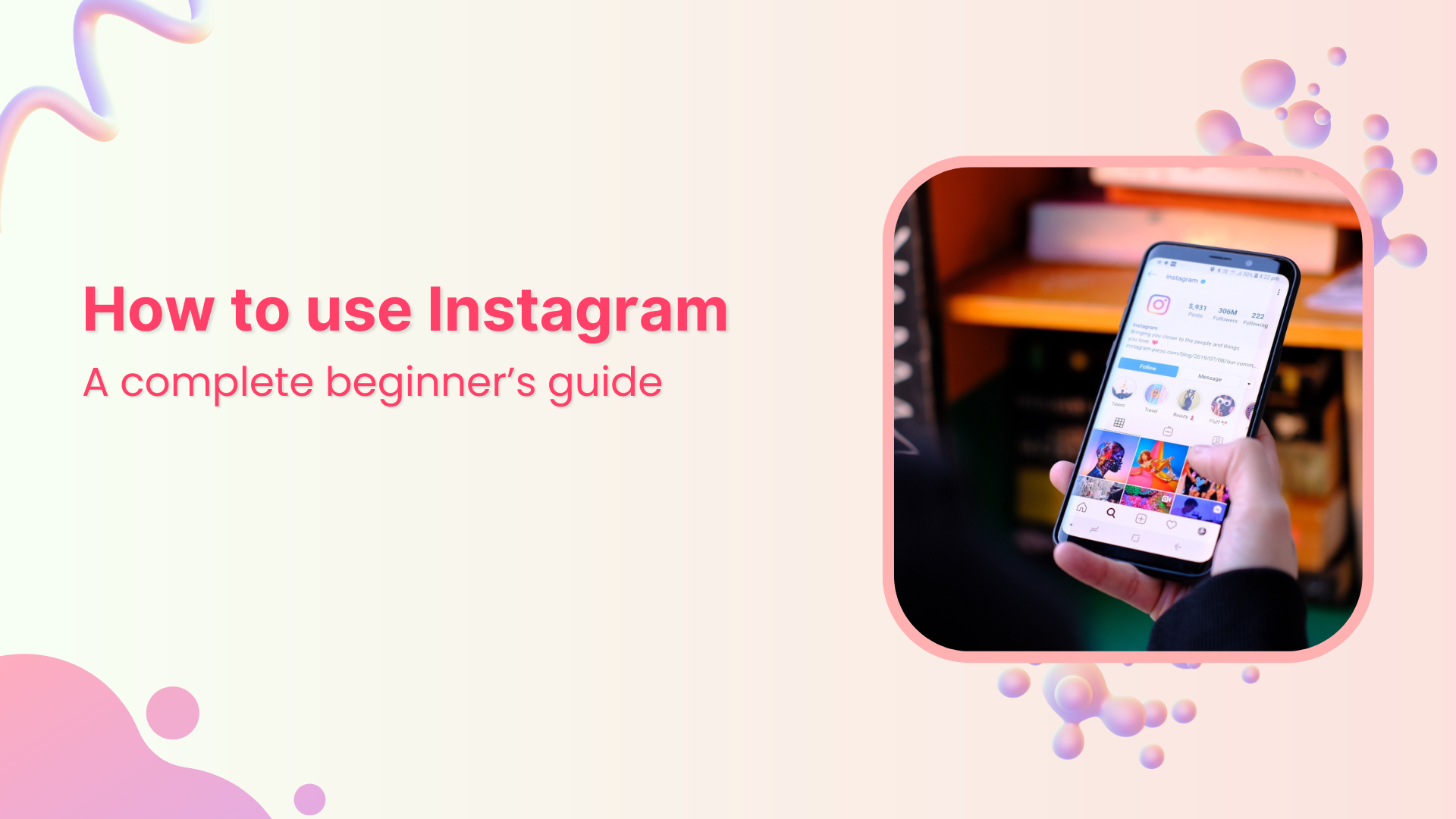
Instagram has evolved far beyond a simple photo-sharing app since its launch in 2010. Knowing how to use Instagram is vital to reach the massive audience of over 2 billion monthly active users on Instagram.
Moreover, Instagram remains one of the most powerful social media platforms in 2025 due to its extensive applications in both personal and professional content. Whether you’re looking to connect with friends, grow a personal brand, or expand your business reach, understanding how to use Instagram as a beginner is essential for your social media strategy.
This comprehensive guide will walk you through everything you need to know about using Instagram, from creating your first account to mastering advanced features for business success.
What is Instagram?
Instagram is a visual-first social media platform owned by Meta (formerly Facebook) that allows users to share photos, videos, and stories with their followers. The platform combines elements of social networking, content creation, and digital marketing, making it a versatile tool for both personal and professional use.
The platform’s core functionality revolves around visual storytelling, where users can share moments from their lives, showcase their creativity, or promote their businesses through various content formats.
Instagram’s algorithm prioritizes engaging content, making it possible for users to reach audiences far beyond their immediate followers.
Is Instagram free?
Yes, Instagram is completely free to download and use. The app is available on both iOS and Android devices, and users can also access Instagram through web browsers on desktop computers.
While all the essential features are free, Instagram offers optional paid features like promoted posts and advertising for businesses looking to expand their reach.
You don’t need to pay any subscription fees to create an account, post content, or interact with other users. The platform generates revenue through advertising, which appears in users’ feeds and stories. Even though Instagram itself is free, social media marketers wanting to maximize their Instagram potential should consider investing in social media management tools to get access to key features that can help them increase engagement.
What is Instagram used for?
Instagram serves multiple purposes depending on your goals:
- Personal connection: Share life moments with friends and family.
- Creative expression: Showcase photography, art, or other creative work through visual content creation.
- Business promotion: Market products, services, and build brand awareness with social media marketing strategies.
- Community building: Connect with like-minded individuals and interest groups.
- Entertainment: Discover trending content, memes, and viral videos.
- Learning: Follow educational accounts and stay updated on topics of interest.
- E-commerce: Shop directly from brands and discover new products through social commerce.
How to create an Instagram account: Step-by-step guide for mobile and desktop users
Creating your Instagram account is quick and easy via both the mobile app and the desktop version. Here’s how to get started on both platforms:
Step 1: Download the Instagram mobile app
First of all, download the official Instagram app on your Android smartphone or iOS device.
For iOS devices:
- Open the App Store.
- Search for “Instagram.”
- Tap “Get” to download the official Instagram app.
- Wait for the installation to complete.
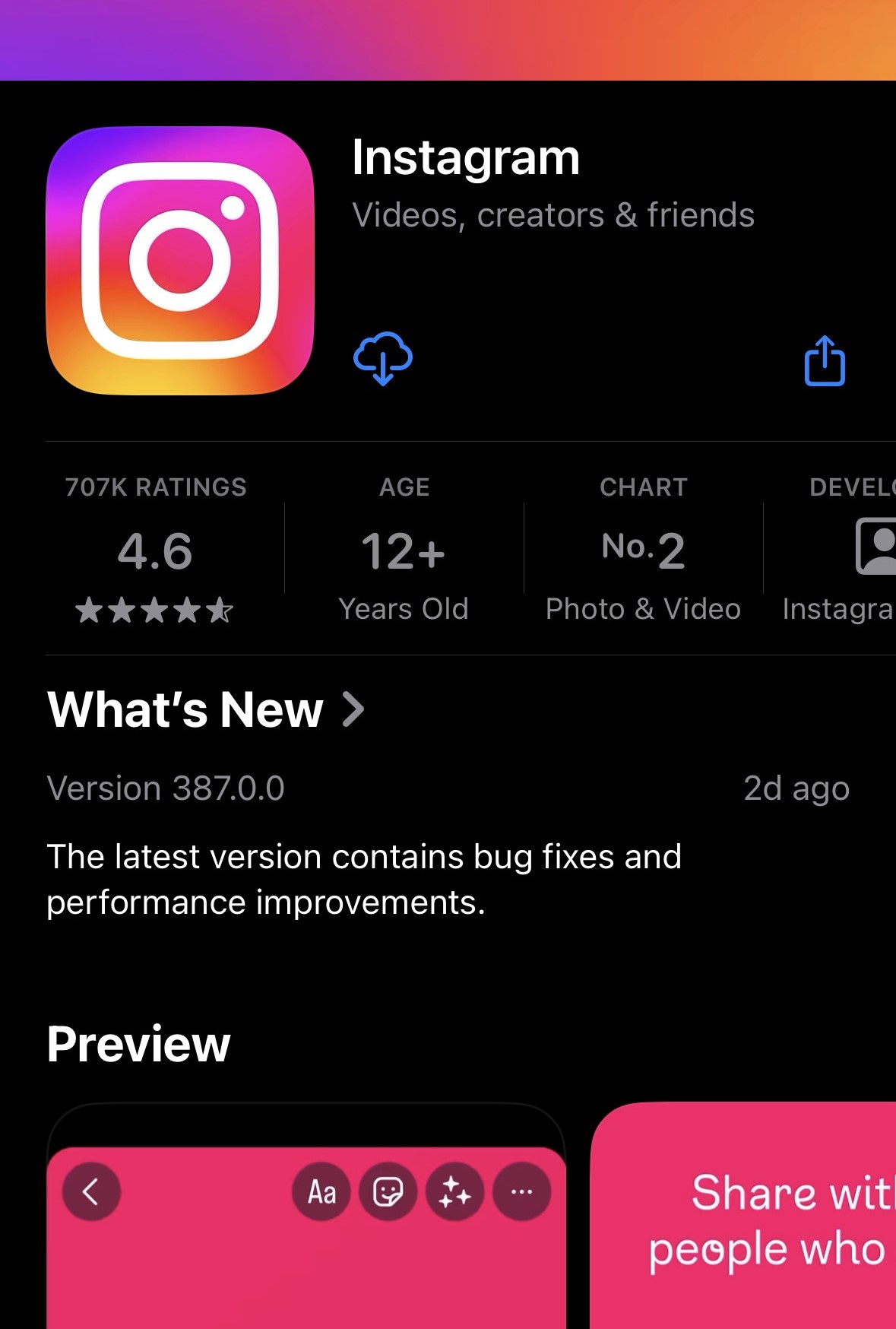
For Android devices:
- Open the Google Play Store.
- Search for “Instagram.”
- Tap “Install” on the official Instagram app.Allow the app to download and install.
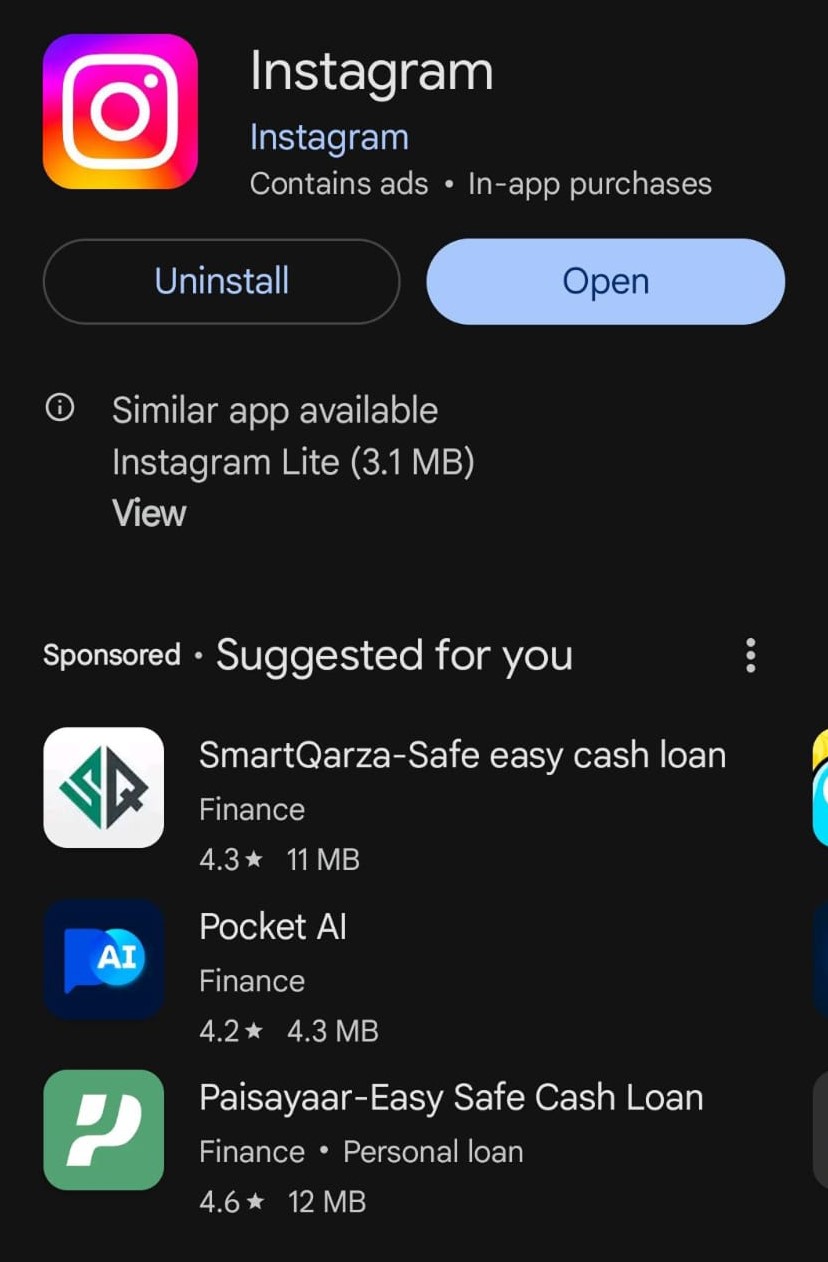
For desktop users:
If you have Windows 10 or later, you can download the Instagram app from the Microsoft app store or simply navigate to instagram.com in your web browser.
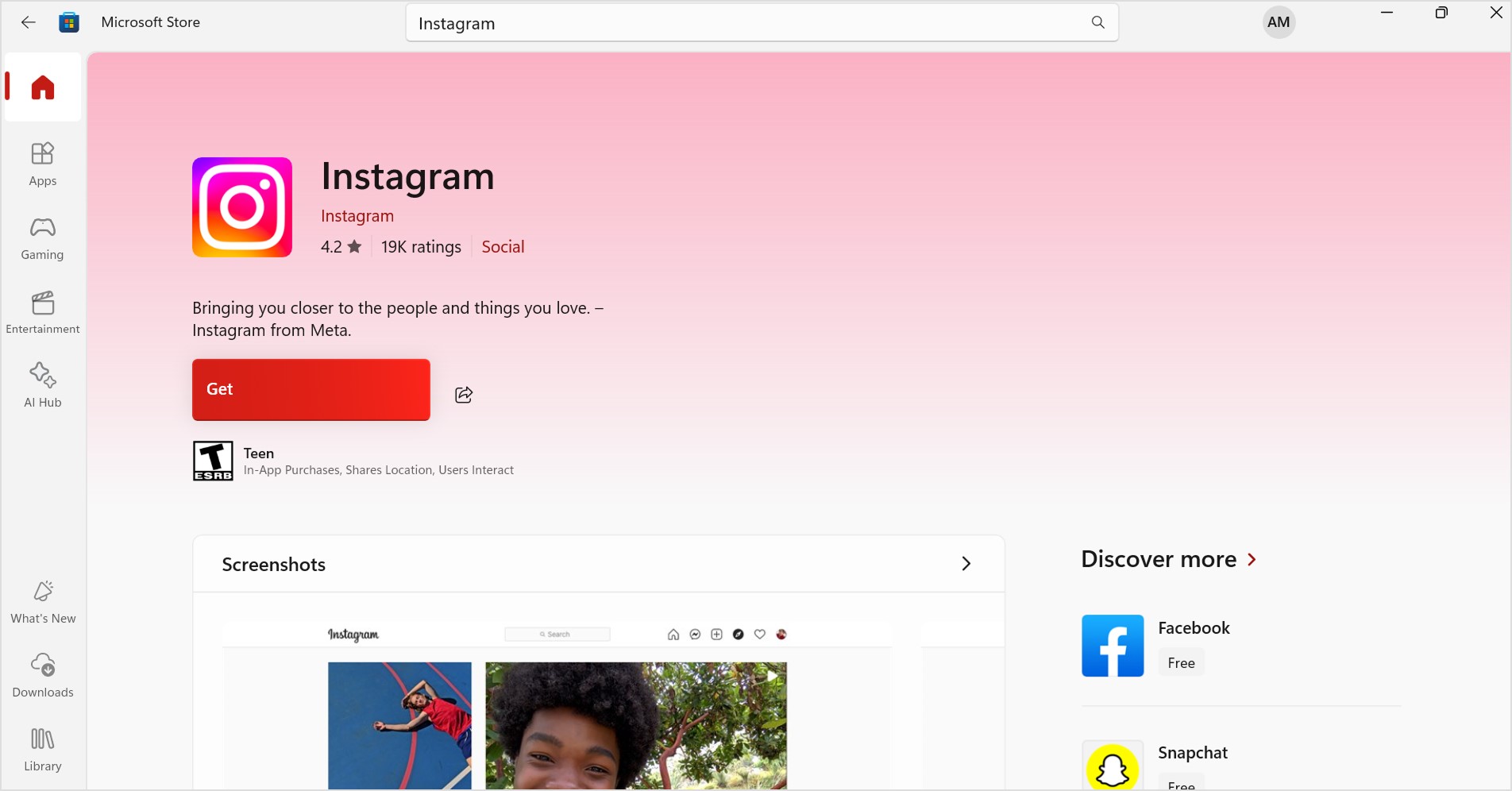
It is important to note that while creating a new Instagram account via desktop is possible, the mobile app is the best way to use all of its features.
Step 2: Create your account and choose a username
Once you have the app installed or are on the website:
- Tap Sign up on the welcome screen.
- Enter your email address or phone number.
- Create a strong password.
- Choose your username (this is your Instagram handle).
Here’s what the sign-up screen looks like:
For Mobile:

For Desktop:
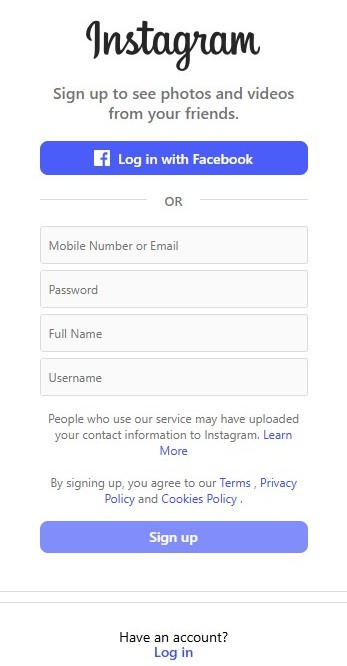
Tip: What is an Instagram handle, and how to choose the right one?
Your Instagram handle is your unique username preceded by the @ symbol. This is how other users will find just like any other social media handle, and mention you on the platform. Choose something memorable, relevant to your brand or personality, and easy to spell. You can always change your Instagram name later in your account settings.
Generally, you should:
- Keep it short and memorable.
- Use your real name or brand name when possible.
- Avoid excessive numbers or special characters.
- Check that it’s consistent across other social platforms.
- Make sure it reflects your content or personality.
Most importantly, you can use free tools like ContentStudio’s Instagram username generator to brainstorm creative options.
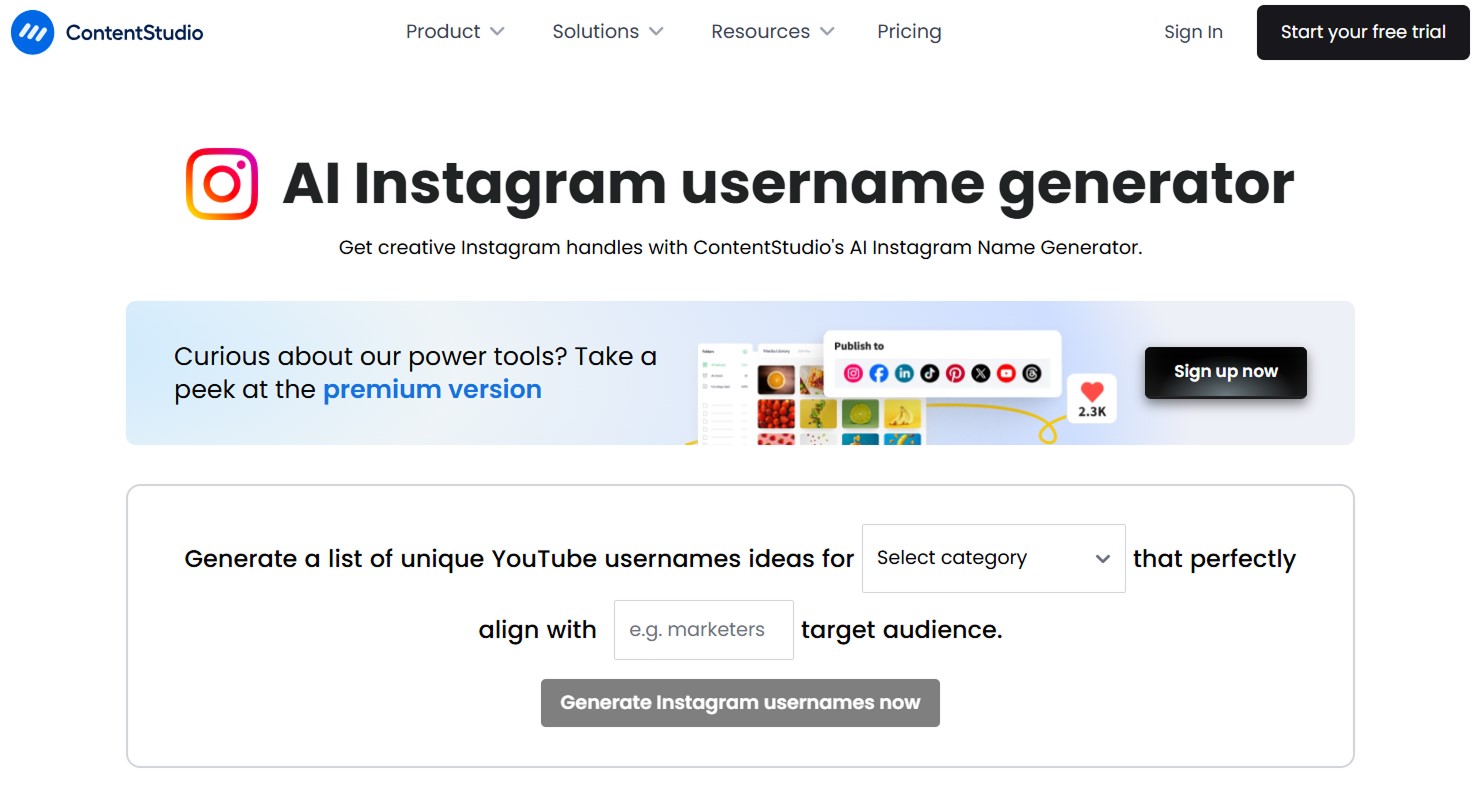
Step 3: Set up your profile
After creating your account, it’s time to optimize your profile by focusing on these aspects:
1. Add a profile picture:
- Use a clear, high-quality image.
- Use a photo of yourself for personal accounts.
- Use your logo or brand imagery for business accounts.
- Ensure the image looks good in the circular crop format.
2. Write your bio:
Your Instagram bio is crucial to make a strong first impression. You have 150 characters to describe who you are and what you do.
- Clearly state what you do or what your account is about.
- Include relevant keywords.
- Add personality with emojis.
- Include a call-to-action if appropriate.
3. Add links:
Instagram allows you to add one clickable link in your bio. Make it count by:
- Linking to your website or blog.
- Using a link in bio tool to share multiple links.
- Directing traffic to your latest project or offer.
- Including your link tree for multiple destinations.
Here are a few examples of well-optimized Instagram profiles:
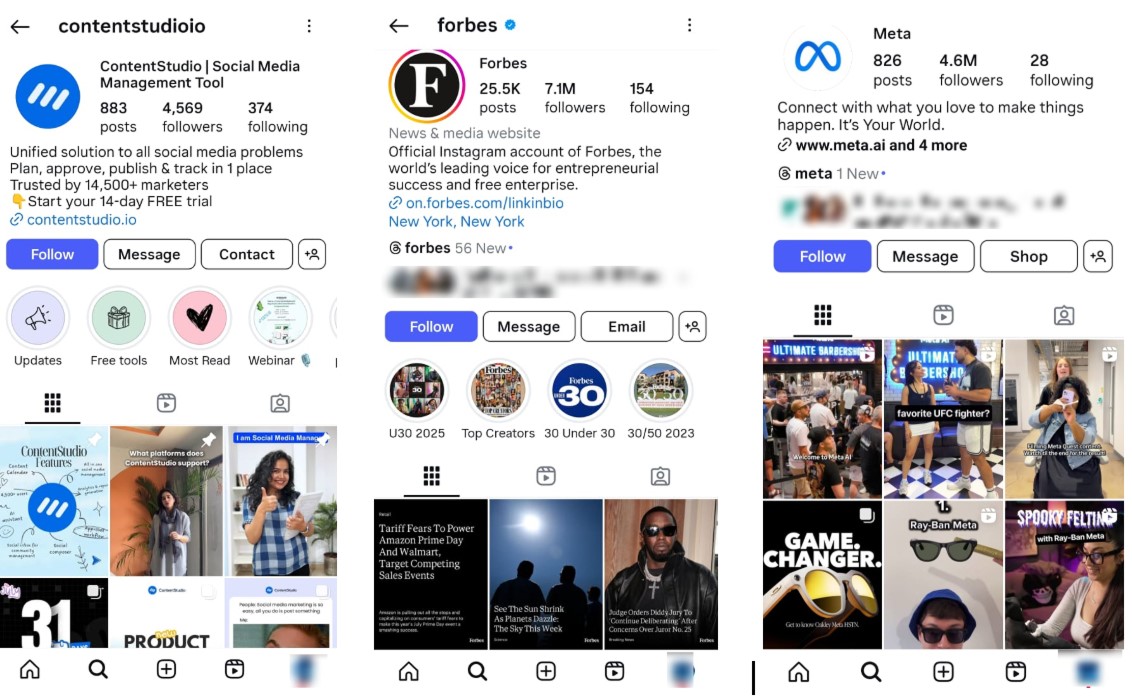
Step 4: Select the most suitable type of Instagram account
Instagram offers three account types, each with different features:
Personal accounts:
- Best for individual users sharing personal content.
- Basic privacy settings and features.
- Limited analytics and business tools.
Business accounts:
- Ideal for companies, brands, and entrepreneurs.
- Access to Instagram analytics and insights.
- Ability to add contact buttons (call, email, directions).
- Access to Instagram advertising features.
- Integration with Facebook business tools.
Creator accounts:
- Perfect for influencers, artists, and content creators.
- Enhanced analytics for content performance.
- Access to creator tools and monetization features.
- Better audience insights.
- Professional dashboard for managing collaborations.
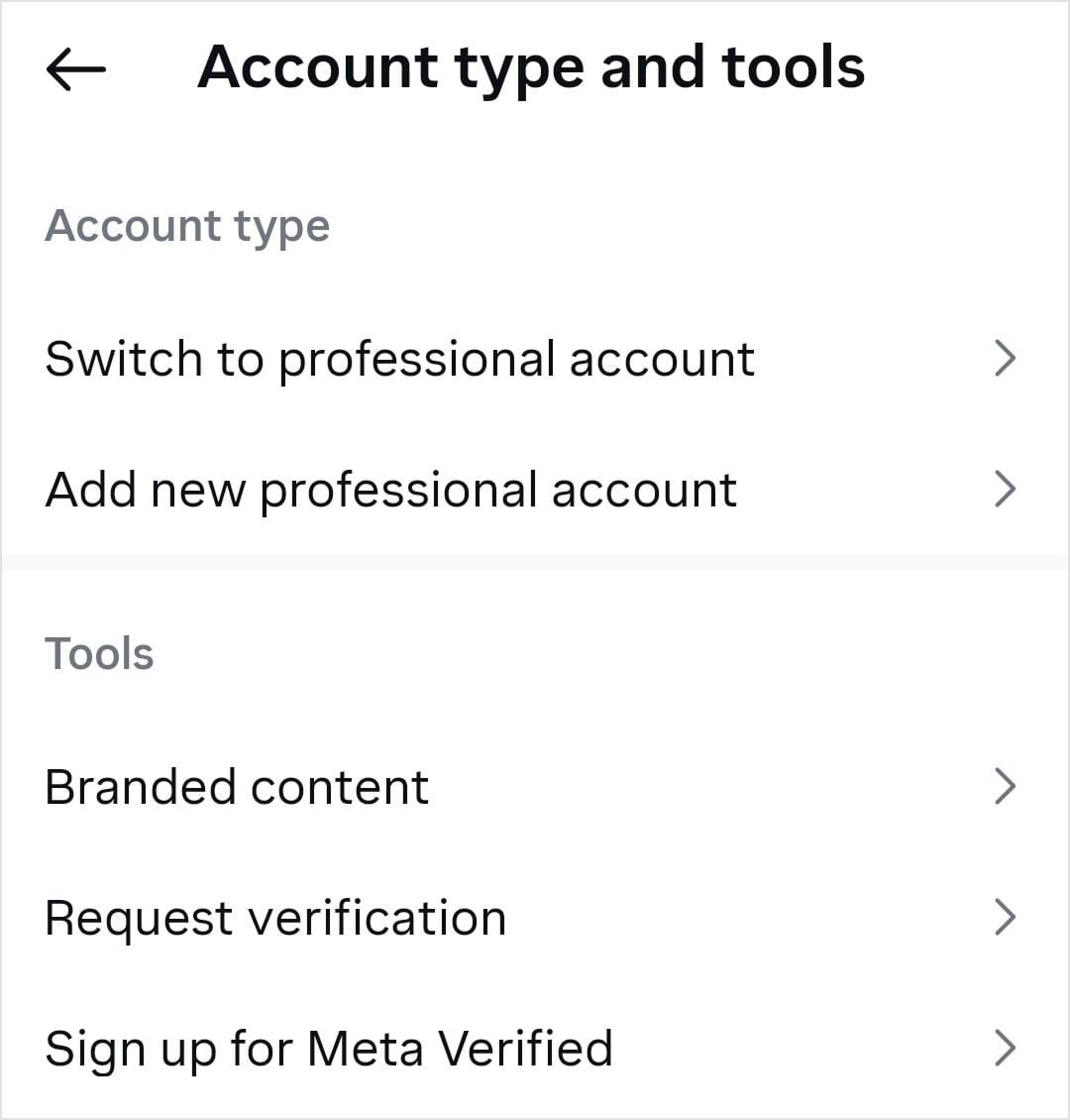
You can switch between account types at any time in your Account type and tools settings, so don’t worry about making the perfect choice initially.
What type of content do I post on Instagram?
Instagram offers various content formats to help you engage with your audience effectively. Understanding each format will help you create a diverse and engaging content strategy.
1. Single-image Posts
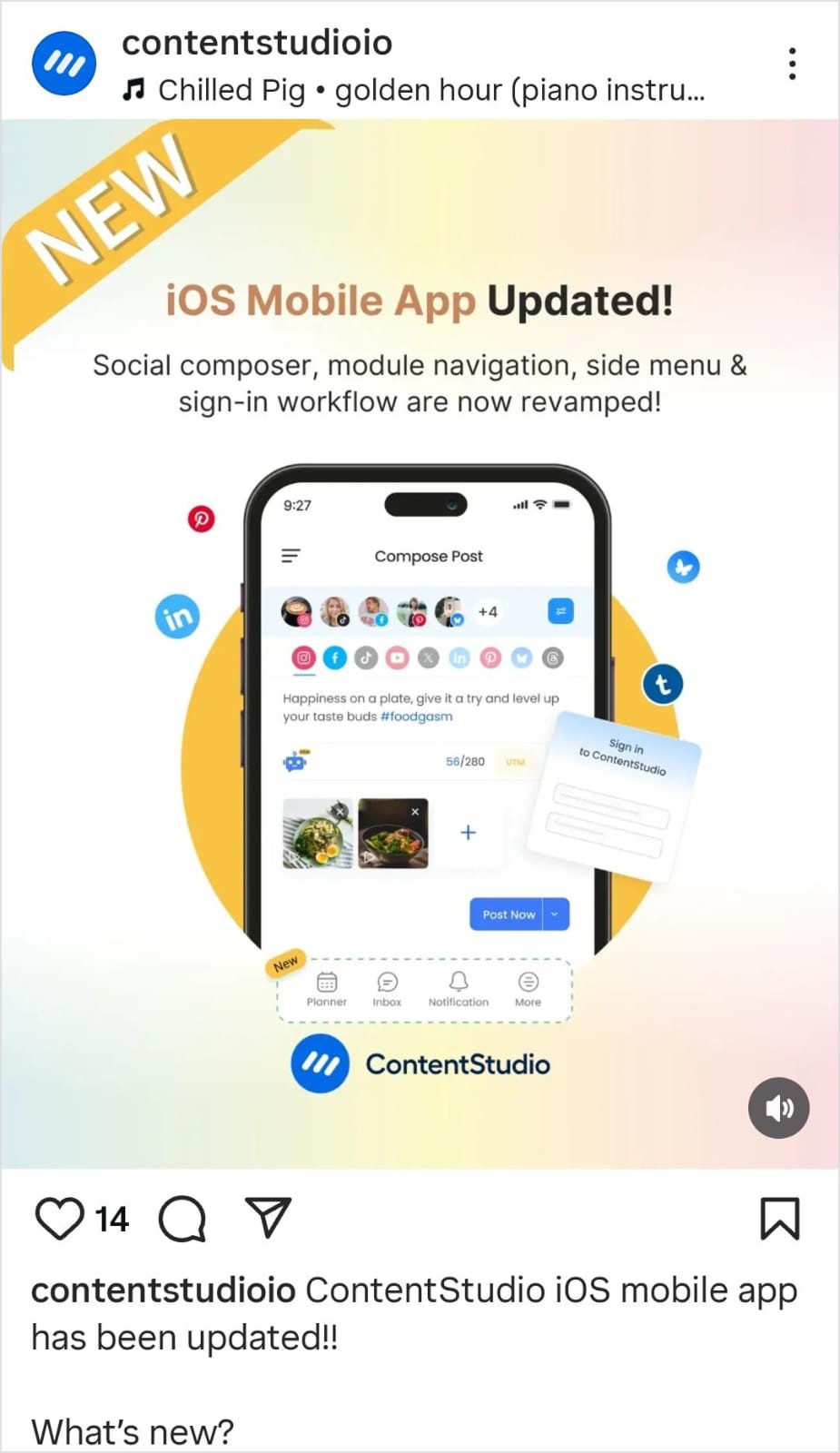
Single-image posts are Instagram’s original format and remain highly effective for:
- High-quality photography
- Product showcases
- Behind-the-scenes moments
- Inspirational quotes
- Educational graphics
You can maximize the reach of your single-image posts by following these best practices:
- Use high-resolution images (1080×1080 pixels minimum).
- Maintain a consistent visual style.
- Write engaging captions that encourage interaction.
- Use relevant hashtags (research shows Instagram hashtags can increase reach by up to 70%).
Also Read: 1090+ best Instagram captions ideas [ultimate list]
2. Instagram Carousels
Instagram carousels allow you to share up to 20 images or videos in a single post. They’re perfect for:
- Step-by-step tutorials
- Before and after transformations
- Product catalogs
- Storytelling sequences
- Educational content
Carousels typically receive higher engagement rates than single posts because they encourage users to swipe through all the content. Most users, especially with personal accounts, typically deal with single-image posts and carousels initially while learning how to post on Instagram.
Also Read: What is a carousel post? Benefits, platform requirements, & creation tips
3. Instagram Reels
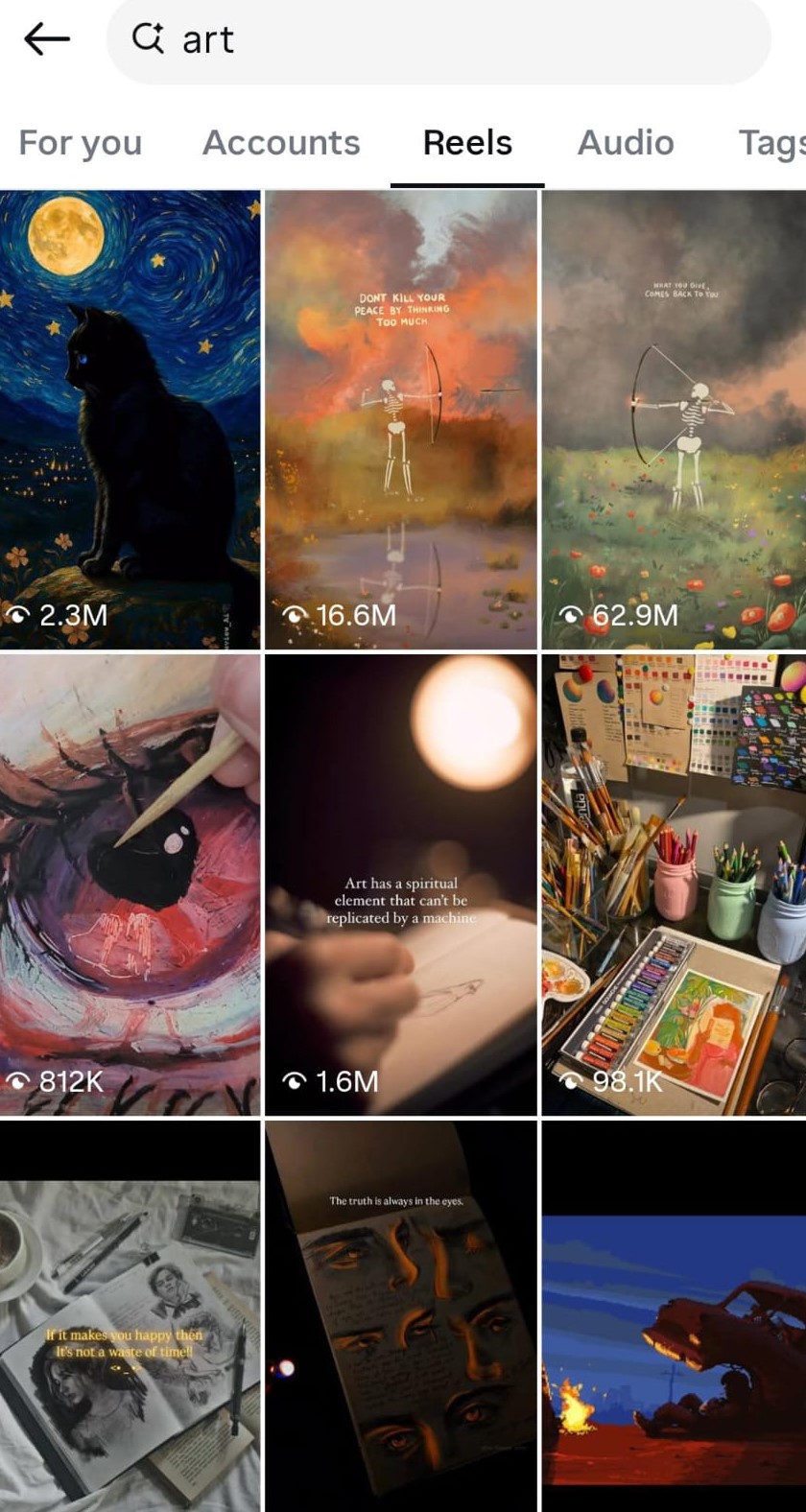
Instagram Reels are short-form videos (up to 90 seconds) that can go viral and reach audiences beyond your followers. Use Reels for:
- Quick tutorials or tips
- Trending audio and hashtags
- Behind-the-scenes content
- Entertainment and humor
- Product demonstrations
Reels are favored by Instagram’s algorithm, especially due to the increase in doomscrolling. Hence, they can significantly boost your reach and follower growth, so you should know how to post on Instagram.
Also read: How to share a Reel on Instagram: Complete guide for 2025
4. Instagram Stories

Instagram Stories disappear after 24 hours, making them perfect for:
- Daily updates and casual content
- Polls, questions, and interactive stickers
- Behind-the-scenes glimpses
- Time-sensitive announcements
- Directing traffic to your posts or external links
Stories appear at the top of the Instagram app and can be saved as Instagram Highlights for permanent visibility on your profile.
Also Read: Can you see who views your Instagram Highlights? [2025 guide]
5. Instagram Notes
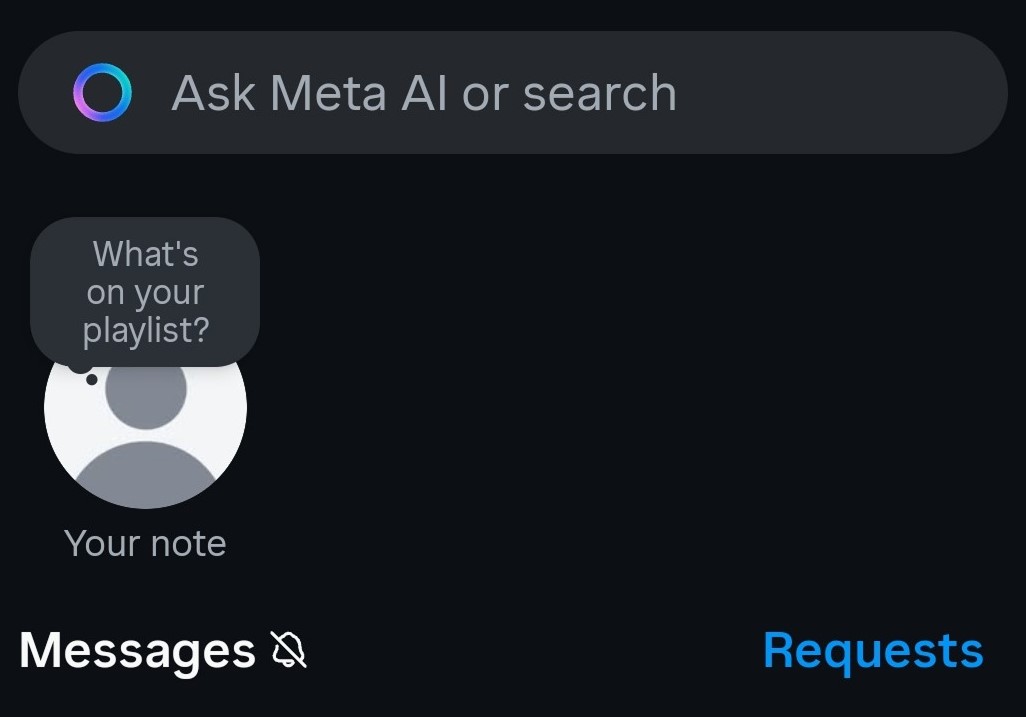
Instagram Notes are short text or emoji updates that appear above your DMs. They’re great for:
- Quick thoughts or announcements
- Mood updates
- Asking simple questions
- Sharing brief updates
6. Instagram Live
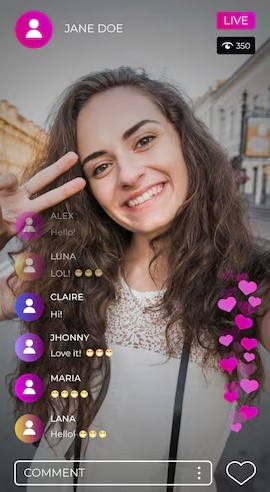
Instagram Live allows you to broadcast in real-time to your followers. It’s excellent for:
- Q&A sessions with your audience
- Product launches or announcements
- Tutorials and demonstrations
- Building authentic connections with followers
Live videos often receive high engagement because they create a sense of urgency and exclusivity.
Also Read: Live streaming: Definition, types, benefits & best practices
Instagram app tutorial: Learn to use all features
Learning how to post on Instagram via different features is important to create engaging content and build a strong connection with your audience.
Let’s look at these key features one by one:
How to share content on Instagram?
You already know about the key types of content on Instagram and their best practices. Here’s how you can share them on Instagram, it all starts with the create (+) button:
Step 1: Tap the “+” icon at the bottom center of your screen.
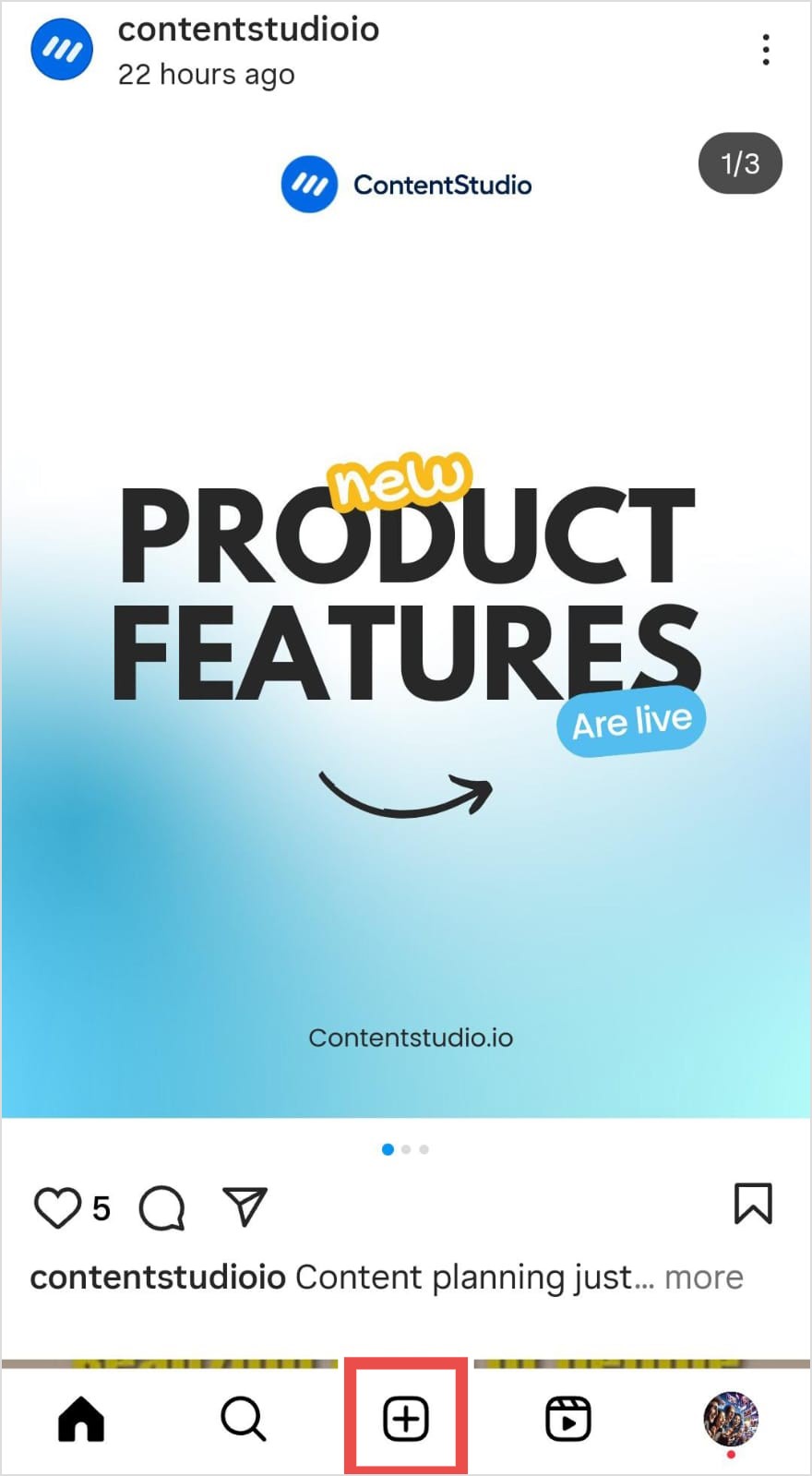
How to share Instagram Stories?
Step 2: Navigate to the Story option and capture a photo/video, or select from your camera roll.

Step 3: Add text, stickers, or other creative elements.
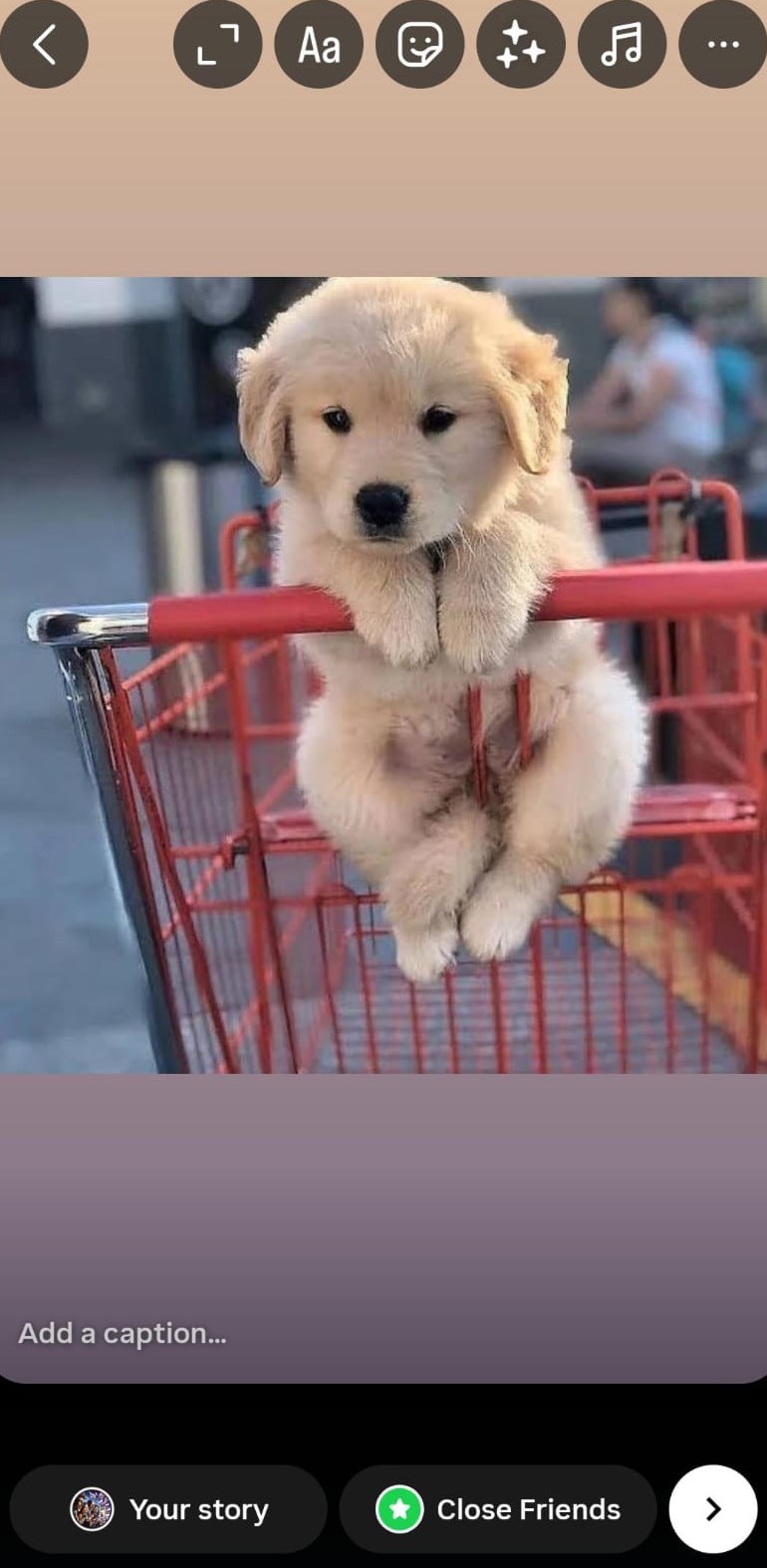
Step 4: You choose to post the story to Close Friends or publically.
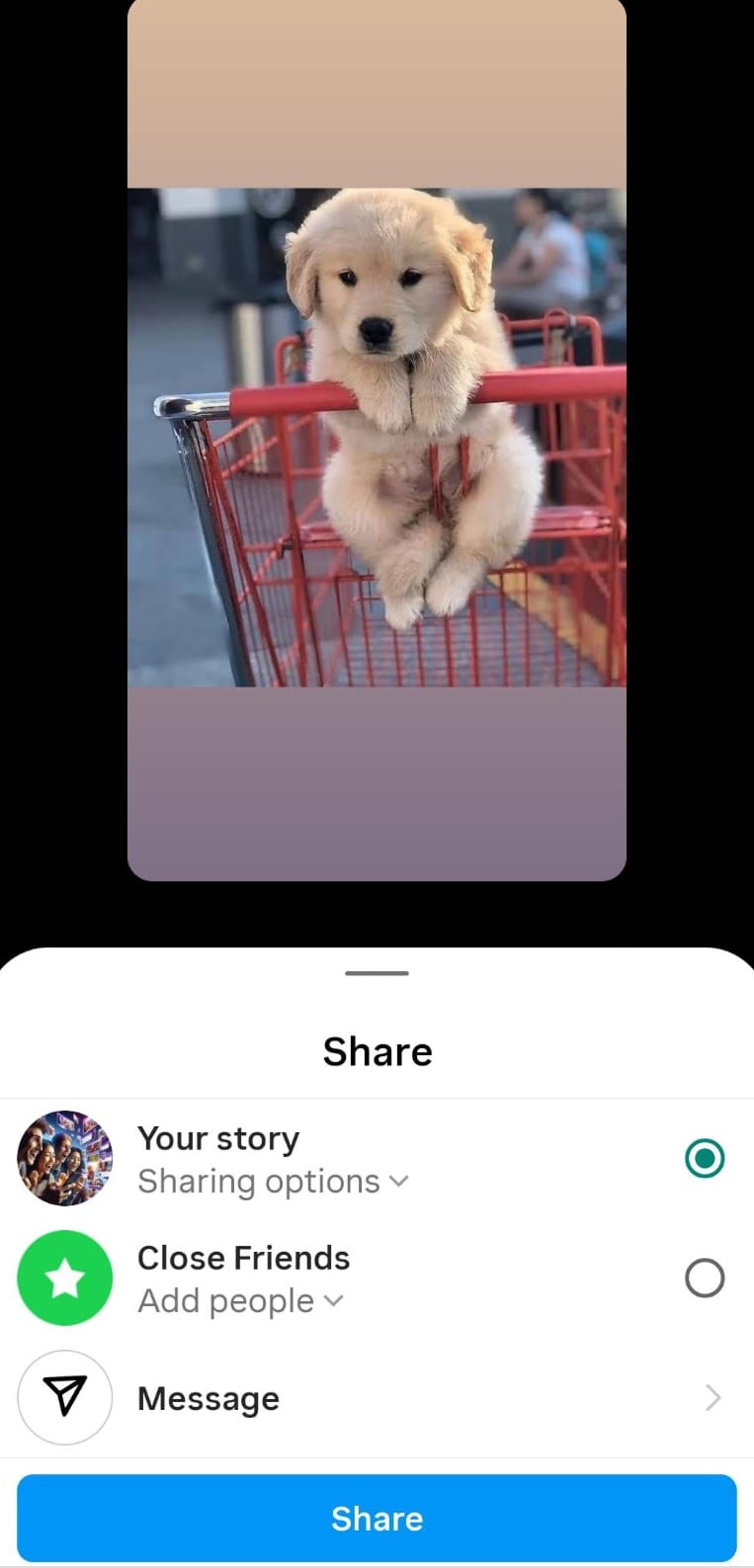
How to share Instagram Reels?
Step 2: Navigate to the Reel option and record your video or upload from your gallery.
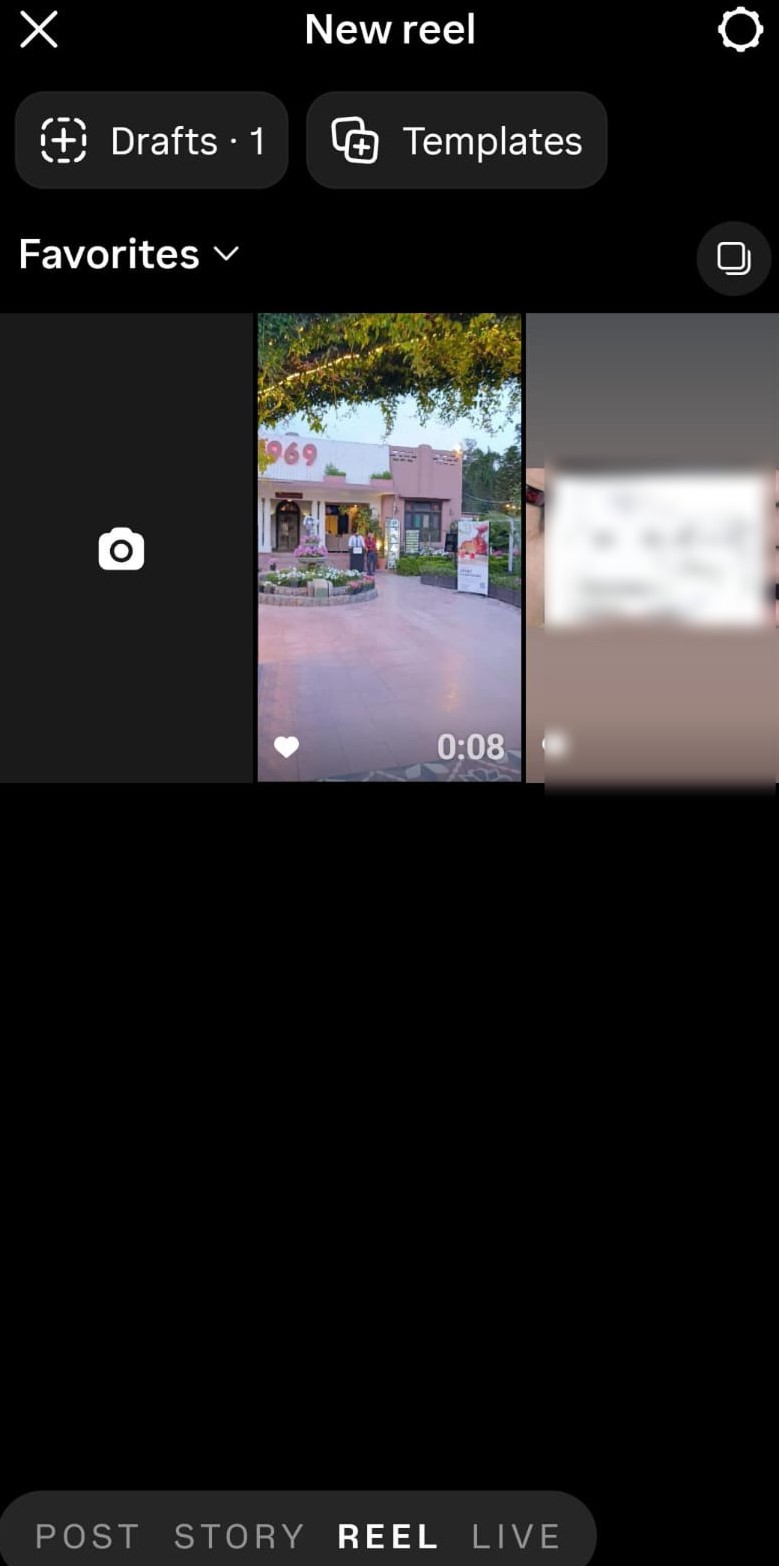
Step 3: Add music, effects, and text overlays.
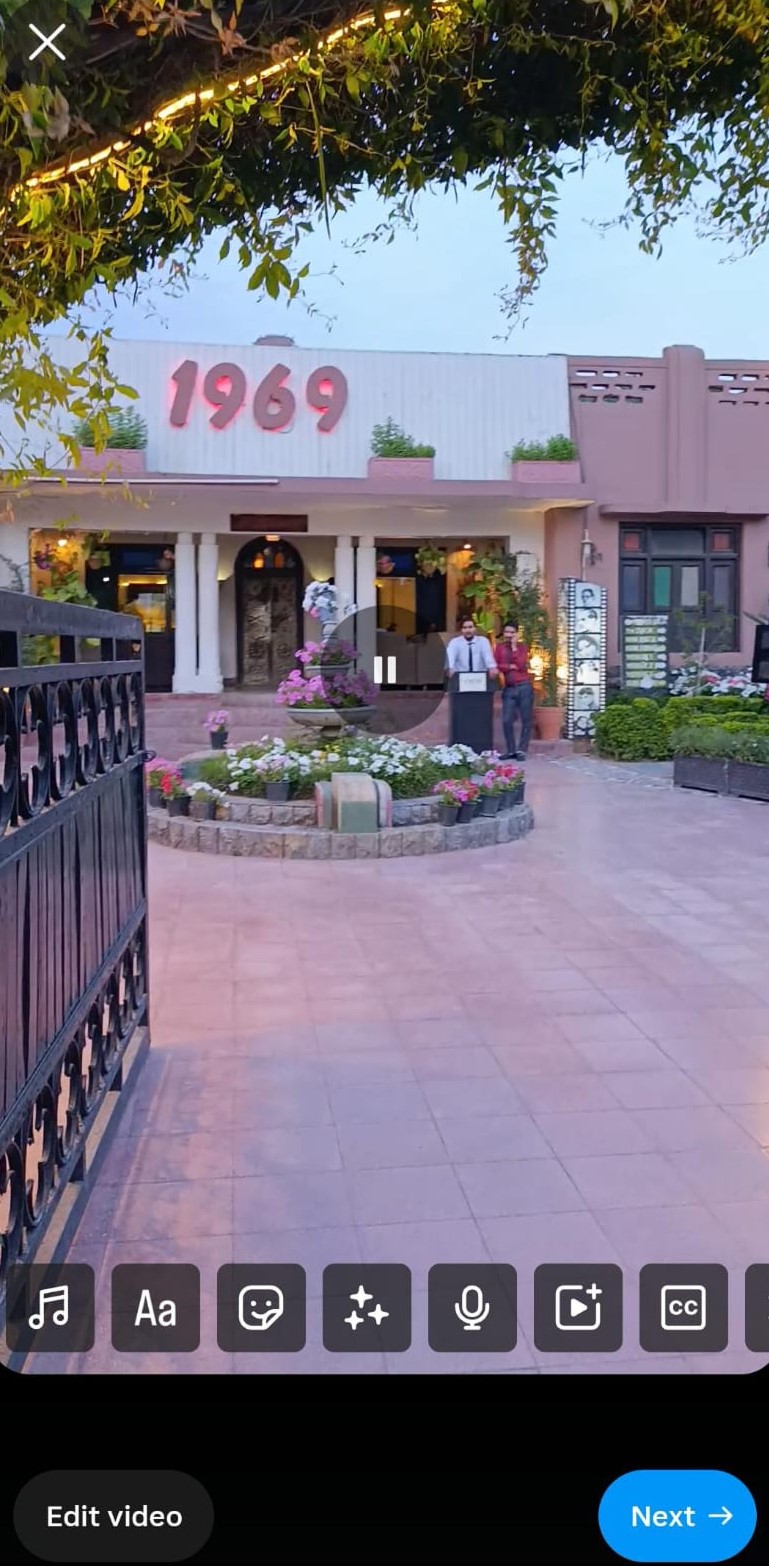
Step 4: Write a compelling caption, add relevant hashtags, and tap “Share.”
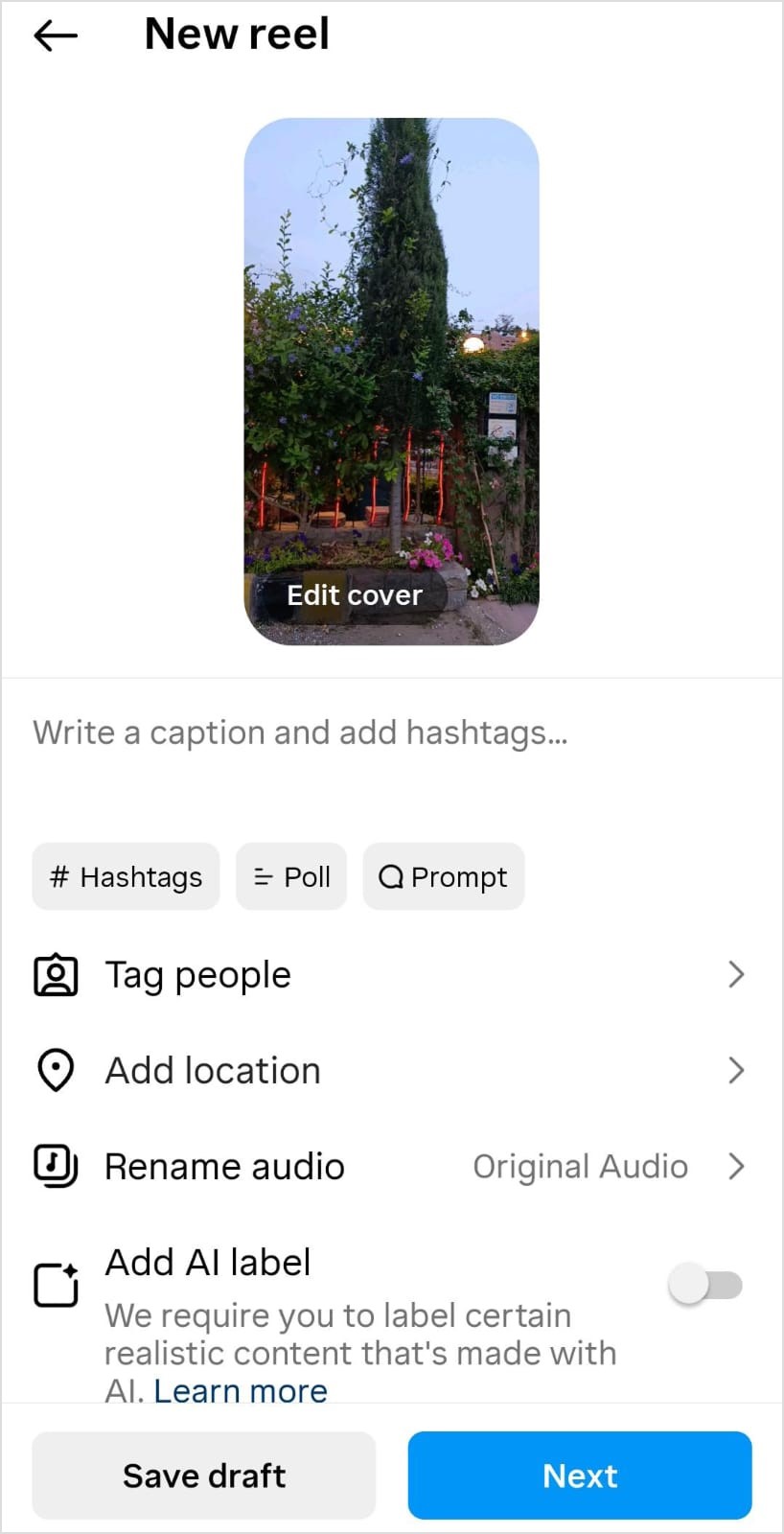
How to post single-image posts and carousels?
Step 2: Choose a single image or multiple images for a carousel.
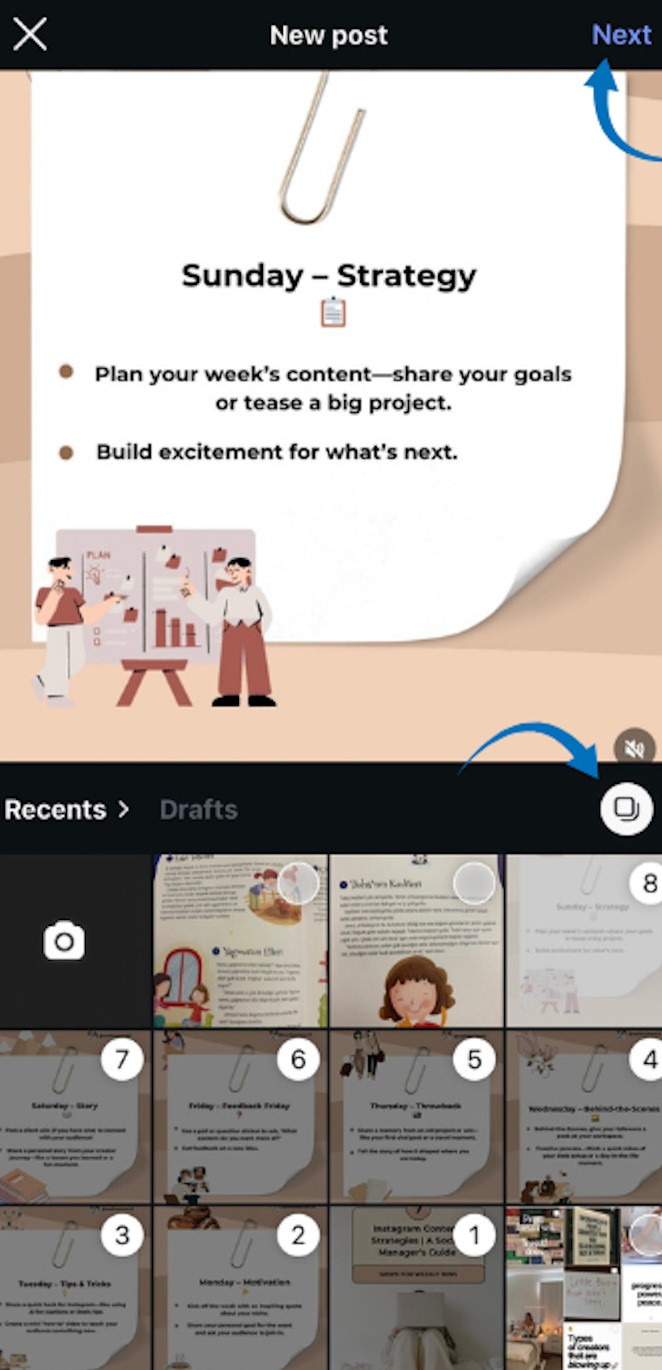
Step 3: Apply filters and edit as needed.
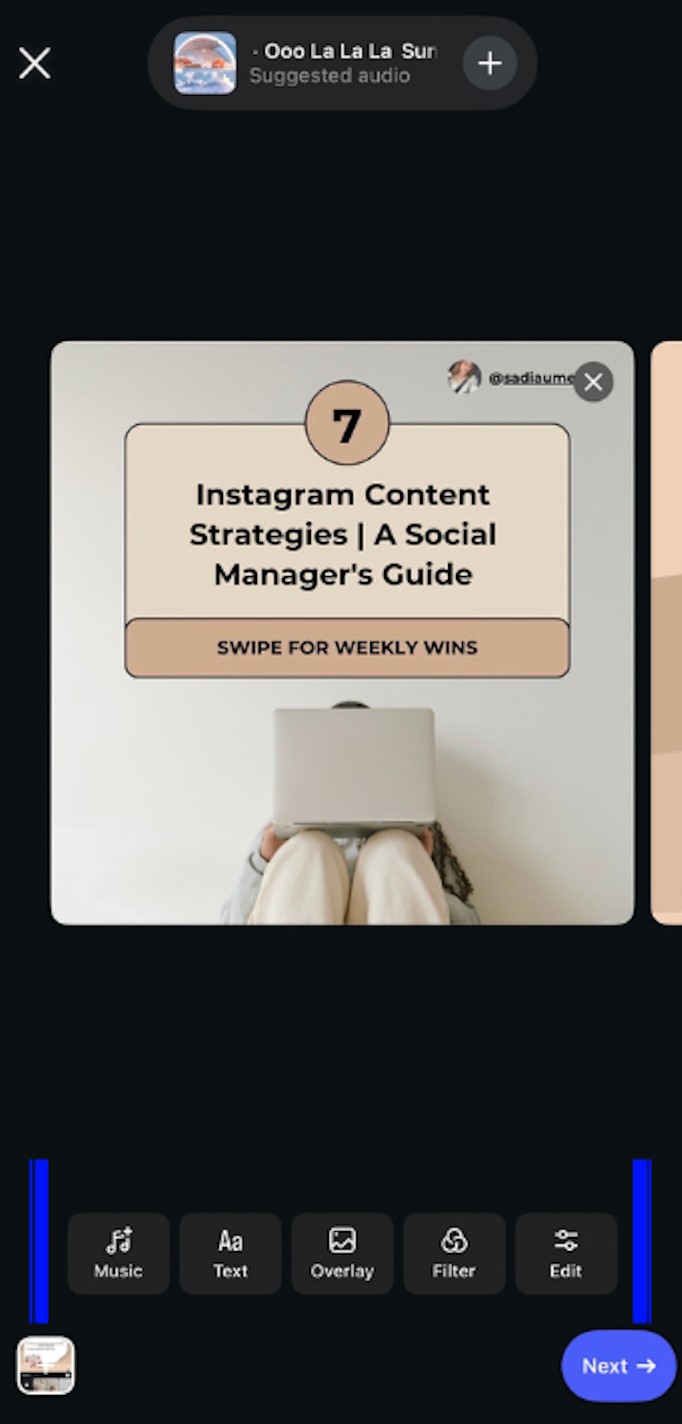
Step 4: Write your caption, add hashtags, and tap “Share.”
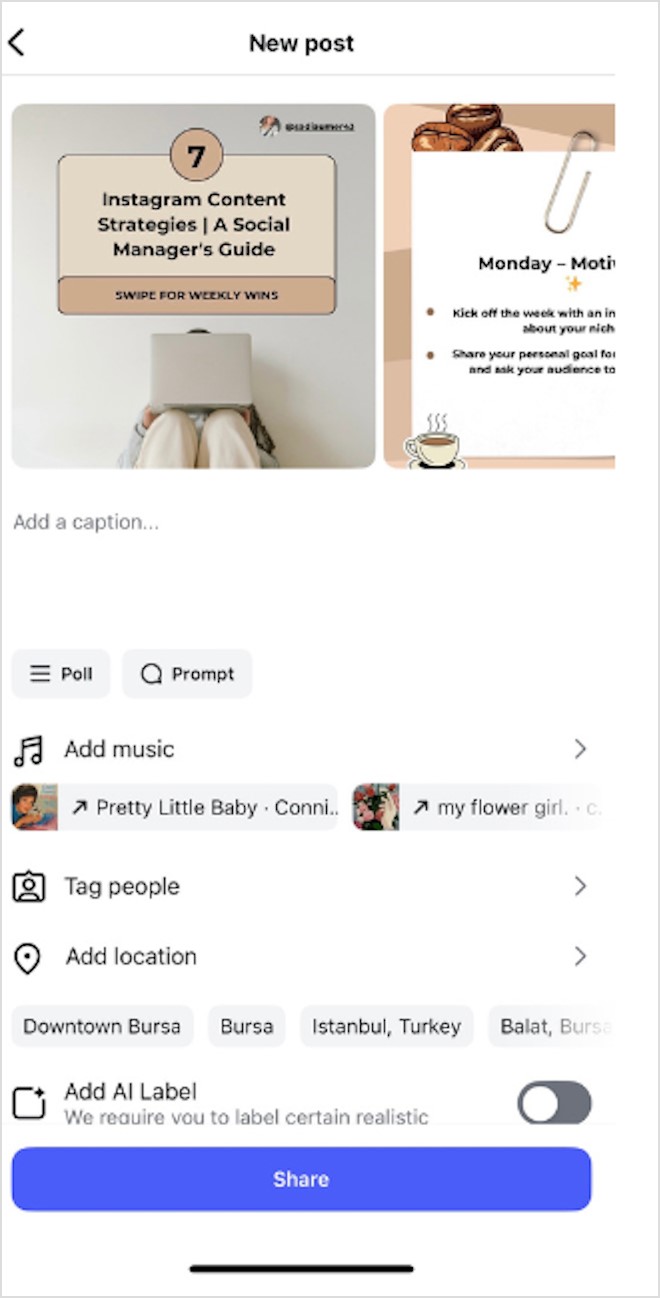
How to go live on Instagram?
Step 2: Navigate to the LIVE option, choose a filter, if you want, and tap the Go Live button to start broadcasting.
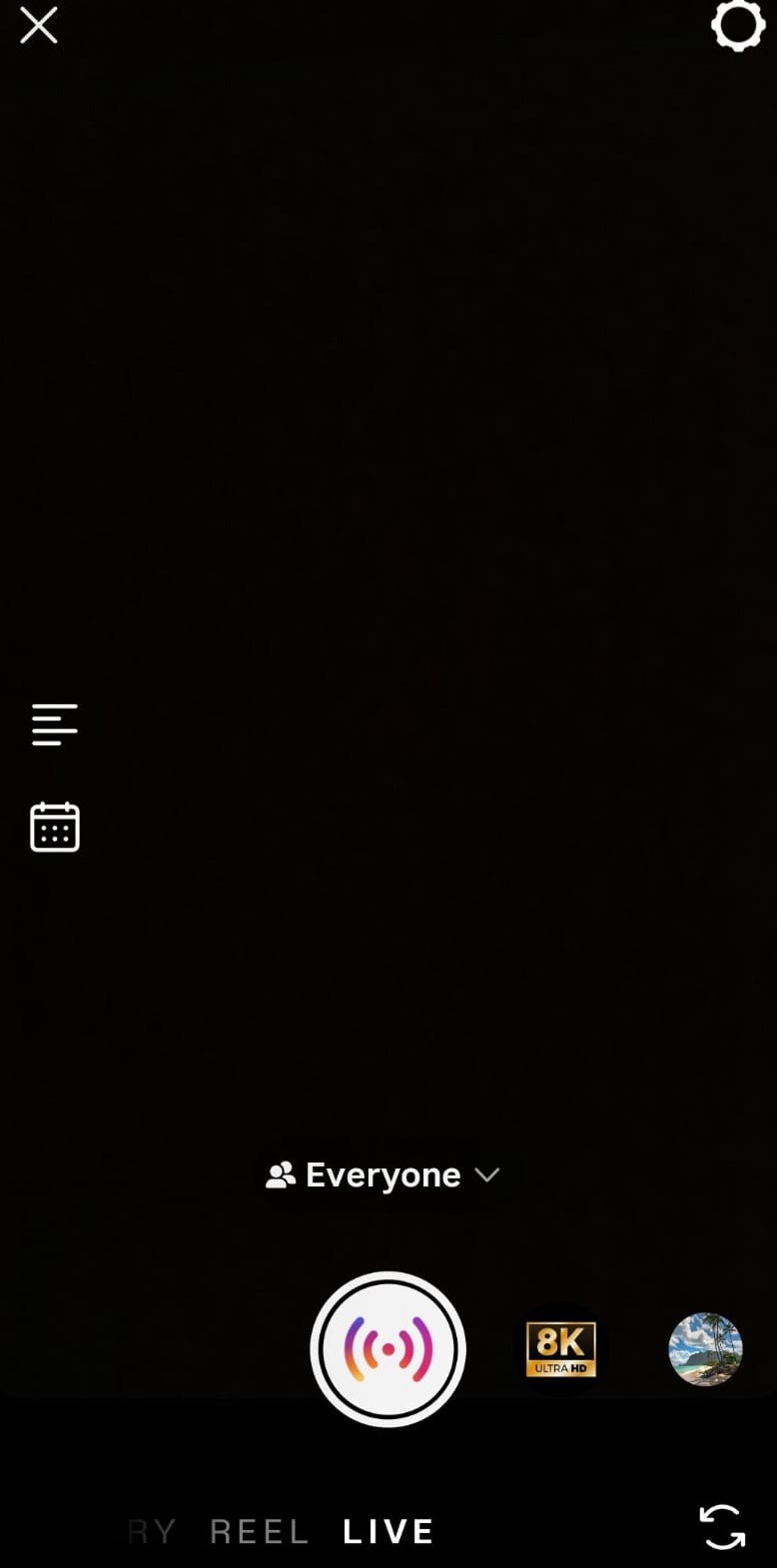
Step 3: Interact with viewers through comments and tap the cross icon when you’re finished.
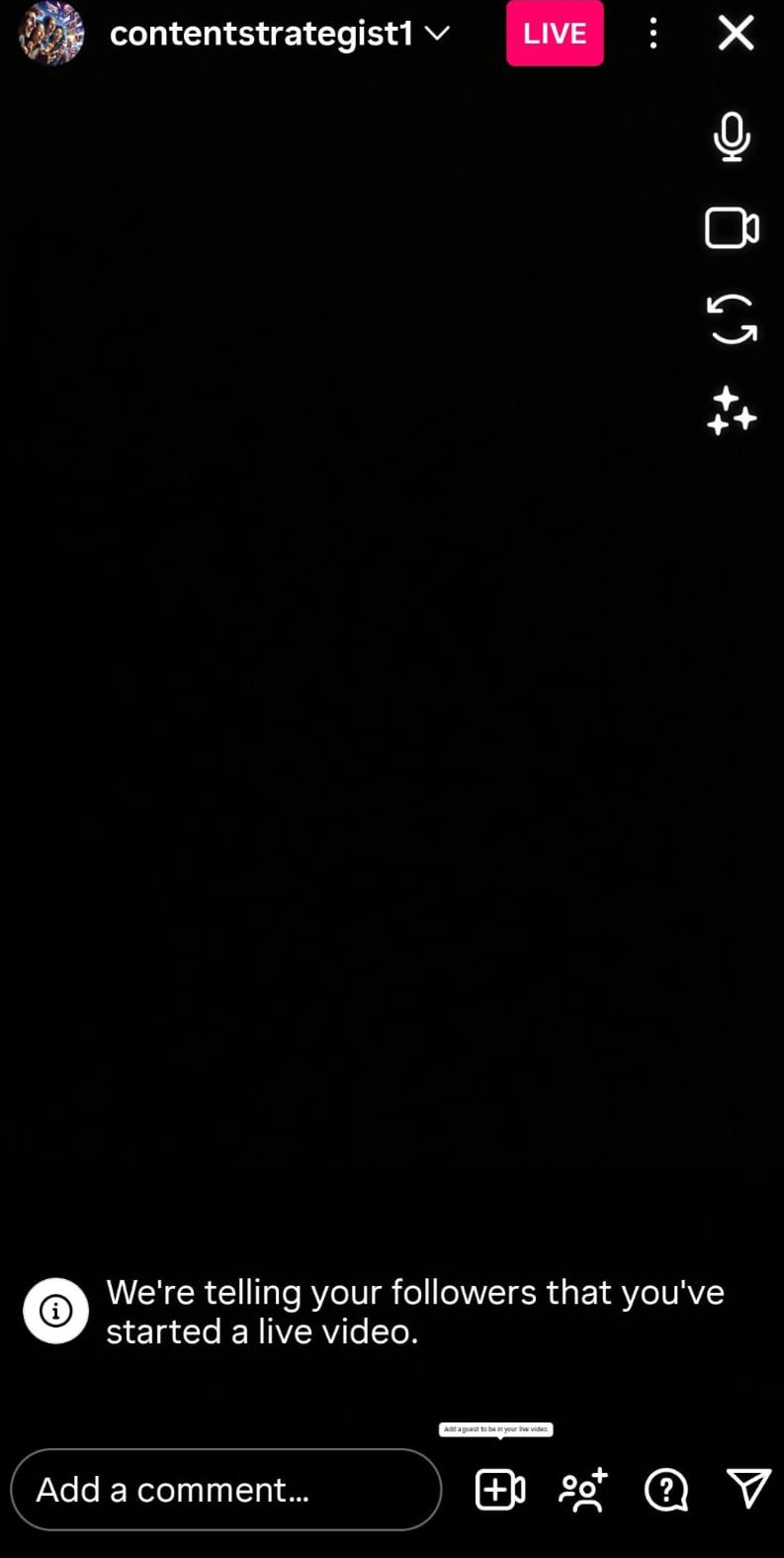
How to interact with Instagram content?
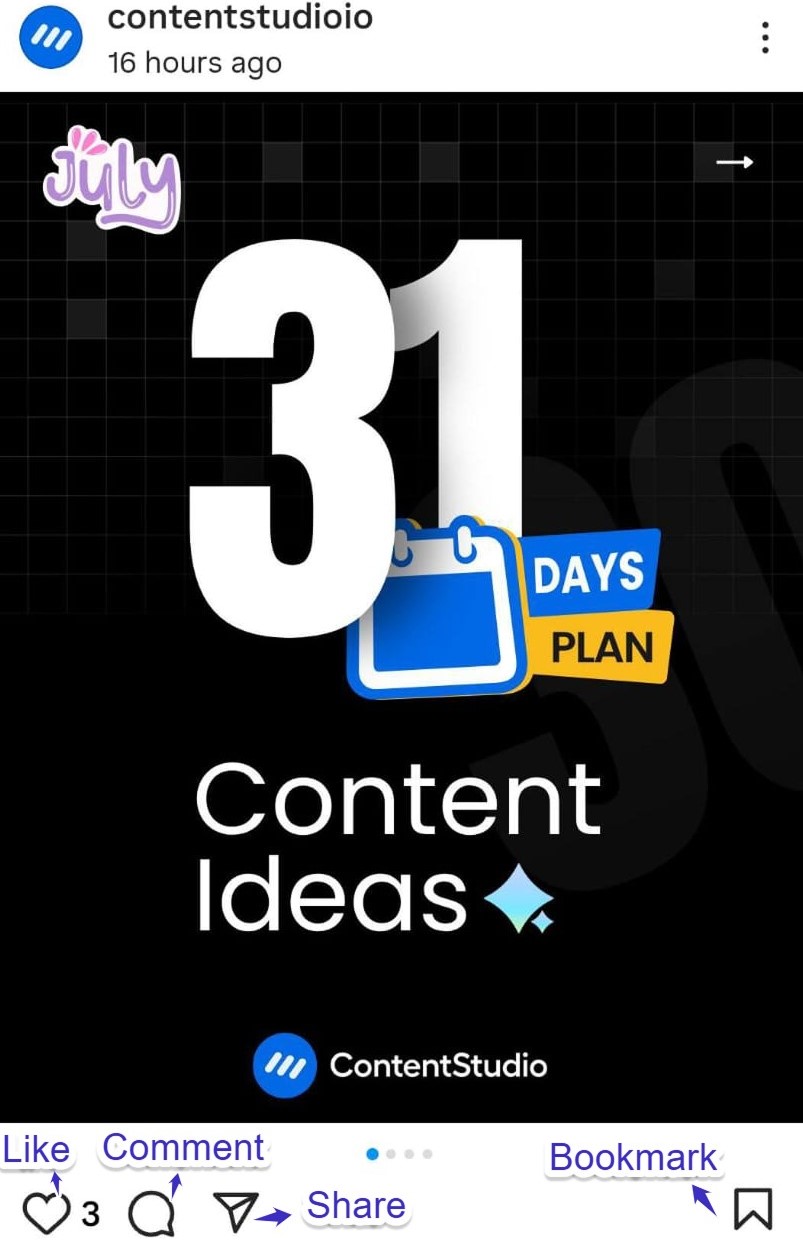
Building genuine connections on Instagram requires active engagement with other users’ content. Effective social media engagement is key to growing your presence and building relationships:
Liking posts:
- Double-tap any post or tap the heart icon to show appreciation.
- Like posts that genuinely resonate with you or your brand values.
- Consistent liking helps the algorithm understand your interests.
Commenting:
- Tap the comment icon and leave thoughtful, relevant comments.
- Ask questions to encourage further conversation.
- Avoid generic comments like “Nice!” – be specific about what you enjoyed.
- Use comments as opportunities to start meaningful conversations.
Sharing:
- Use the paper airplane icon to share posts via DM or to your Stories.
- Share valuable content that your followers would appreciate.
- Always credit the original creator when resharing content.
Saving posts:
- Tap the bookmark icon to save posts for later viewing.
- Organize saved posts into collections for easy reference.
- Use saved posts as inspiration for your own content.
Story interactions:
- Reply to Stories to start private conversations.
- Vote on polls and answer questions to boost engagement.
- Use Story reactions (emojis) to show quick appreciation.
- Share others’ Stories to your own (with permission) to build relationships.
Quality engagement is more valuable than quantity. Focus on meaningful interactions rather than generic comments. Remember that authentic social media etiquette builds lasting relationships.
How to follow people on Instagram?
Building your network on Instagram involves finding and following relevant accounts that align with your interests and goals. Here’s how to strategically grow your following network:
Using the search function:
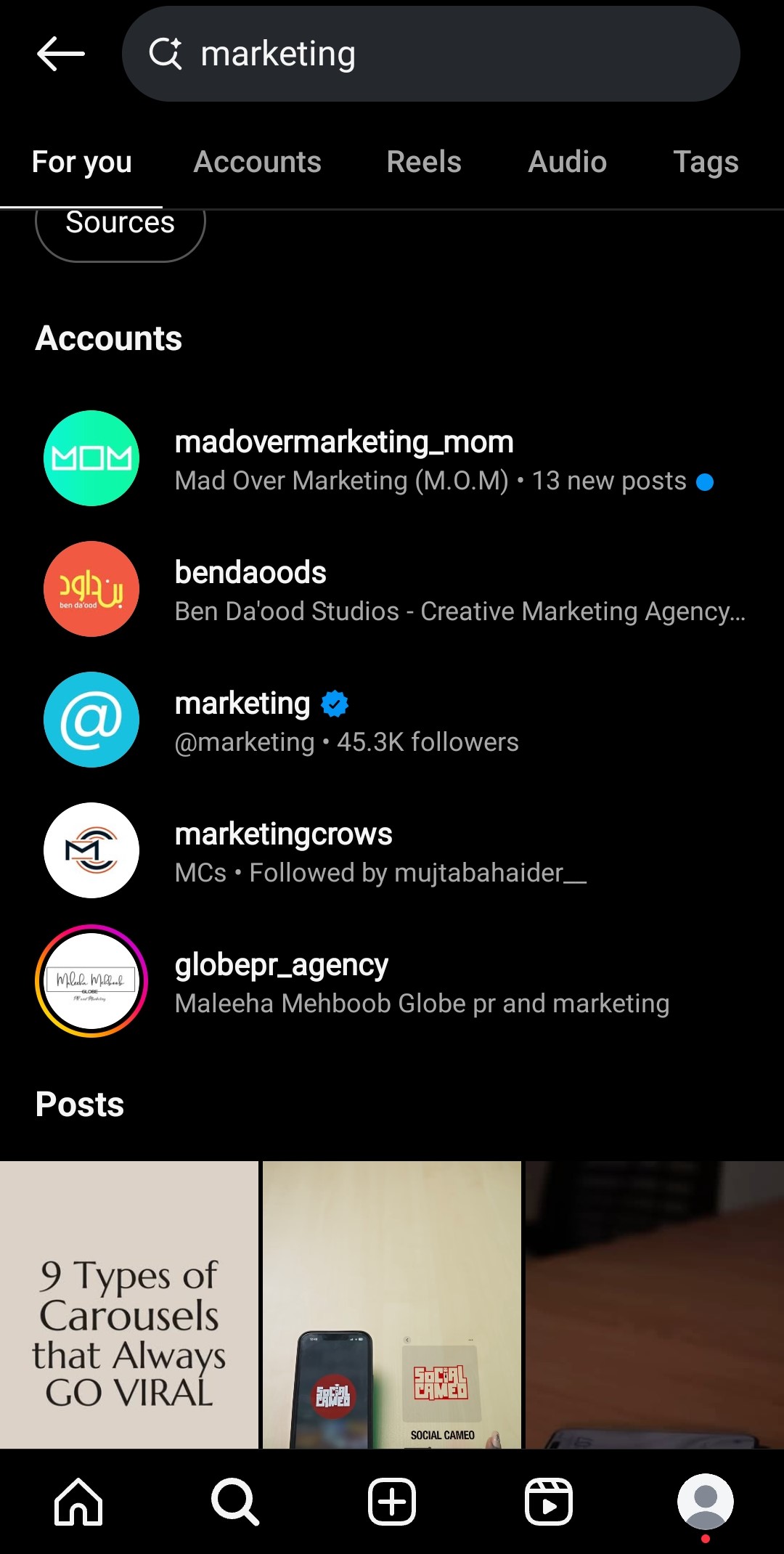
- Tap the magnifying glass icon to access Instagram’s search feature.
- Search for usernames, hashtags, or locations relevant to your niche.
- Use keyword searches to find accounts in your industry.
- Explore different search categories (Top, Accounts, Tags, Places).
Checking followers of similar accounts:
- Look at who follows accounts similar to yours in your niche.
- Engage with these accounts’ content before following.
- Identify potential collaboration partners or industry leaders.
- Find your target audience by exploring competitor followers.
Following hashtags:
- Follow relevant hashtags to discover new content and creators.
- Stay updated on trending topics in your industry.
- Use the hashtag following to expand your content discovery.
- Unfollow hashtags that become irrelevant to your goals.
Connecting contacts:
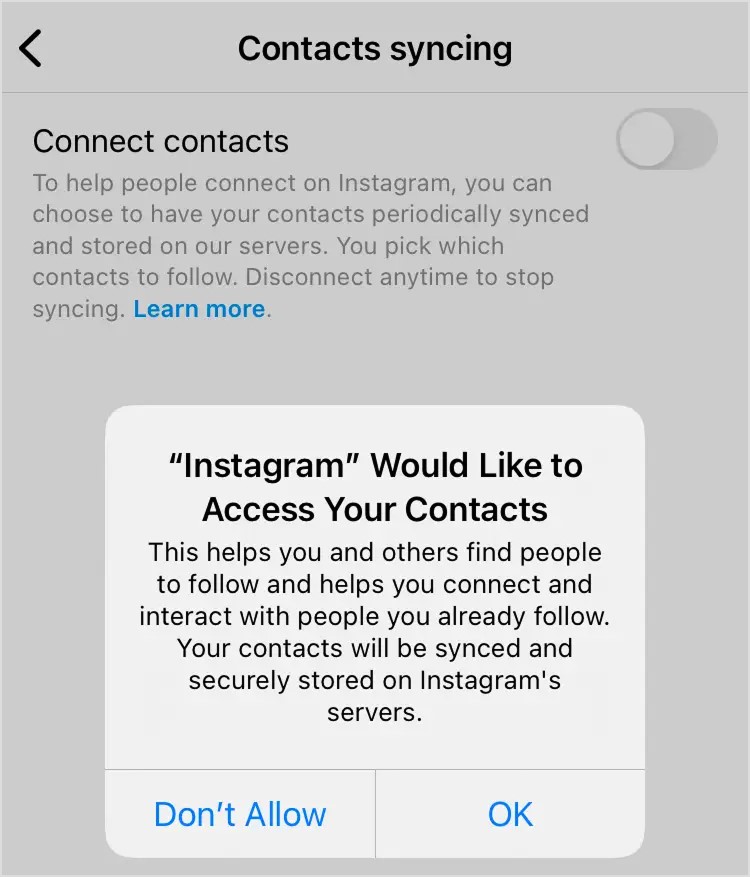
- Allow Instagram to access your contacts to find friends and colleagues.
- Sync your Facebook friends who are also on Instagram.
- Import contacts from your phone’s address book.
- Connect with people you already know to start building your network.
Remember to follow accounts that align with your interests and goals for a more engaging feed experience. Quality connections are more valuable than a high follower count, so focus on building genuine relationships within your community.
Use Instagram DMs to connect with your followers
Instagram DMs are powerful tools for building one-on-one relationships and providing personalized customer service. Mastering direct messaging can significantly improve your social media customer service in business settings and and overall relationship building:
Sending messages:
- Tap the paper airplane icon on the top right of your screen.
- Search for the user you want to message using their username.
- Type your message and tap send.
- Use voice messages for a more personal touch.
- Send photos, videos, posts, or Stories through DMs.
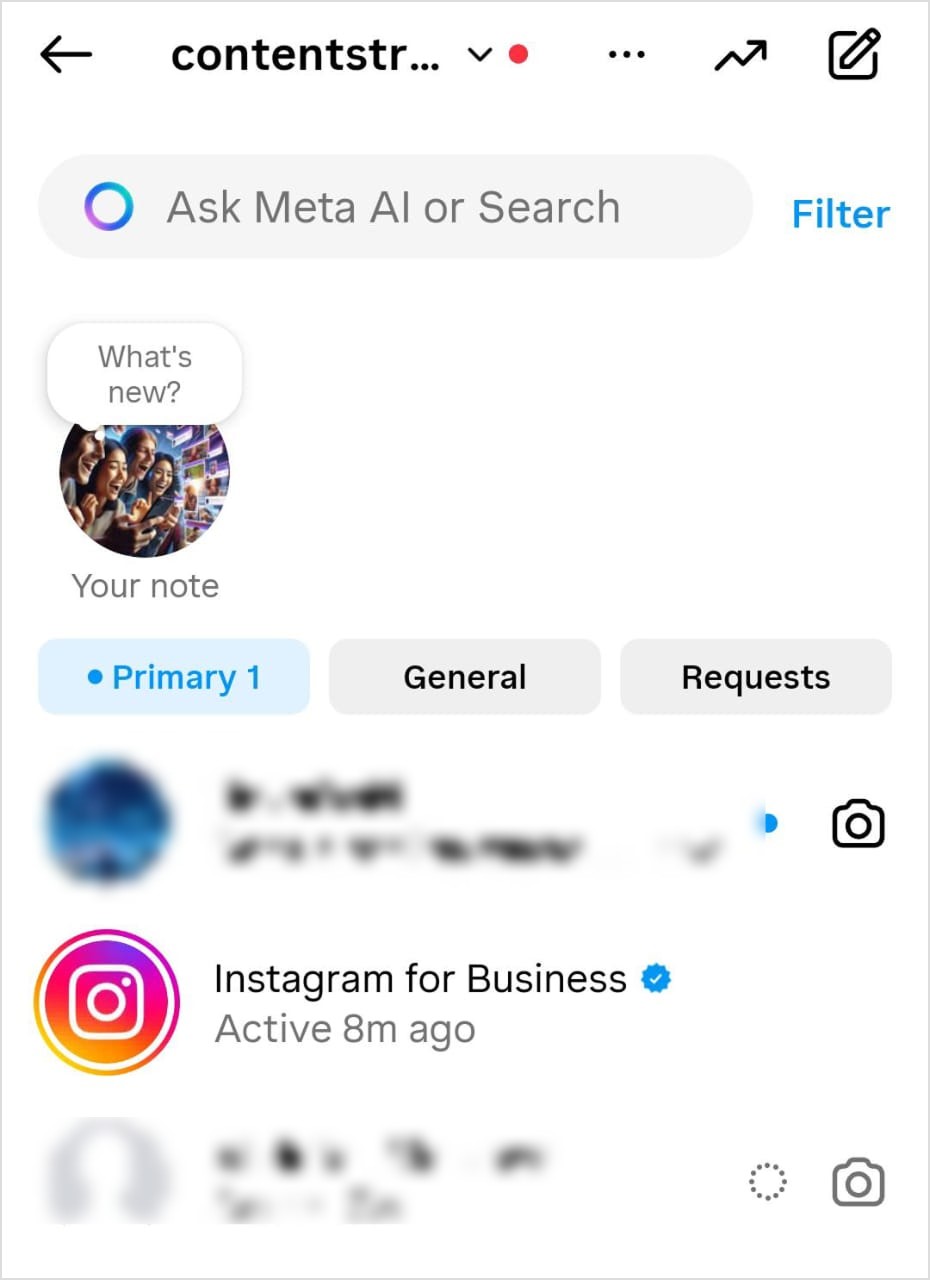
DM best practices:
- Respond promptly to messages from followers (within 24 hours when possible).
- Use DMs for customer service and support to resolve issues privately.
- Share exclusive content or offers to make followers feel special.
- Build relationships with potential collaborators and industry peers.
- Keep conversations genuine and personal rather than overly promotional.
- Use a unified social inbox to respond to messages quickly.
How to use Instagram for business?
Instagram offers powerful tools for businesses to reach customers, build brand awareness, and drive sales. Here’s how to use Instagram for business success:
1. Switch to a business account
First of all, you have to switch to a business account to unlock features like analytics, advertising options, and contact buttons that make it easier for customers to reach you. You can easily do that by accessing settings and opening the Account type and tools section to Switch to professional account as shown earlier.
2. Optimize your business profile
Your Instagram business profile serves as your digital storefront, making first impressions crucial for potential customers. So, once you have switched to a business account on Instagram, the next step involves optimizing the business profile. Follow these tips:
- Use your company logo as your profile picture for instant brand recognition.
- Write a clear, compelling bio that explains what your business does and your unique value proposition.
- Add contact information, business hours, and location details.
Include a strategic link to your website, current promotion, or link in bio tool.
3. Create a content strategy
Successful Instagram businesses don’t just sell—they tell stories that resonate with their audience. Your content should balance promotional material with value-driven posts that educate, entertain, and inspire your followers.
Essential content pillars for business success:
- Behind-the-scenes content to humanize your brand and build trust.
- Product demonstrations showing your offerings in real-world situations.
- Customer testimonials and user-generated content to build social proof.
- Educational posts that position your business as an industry expert.
- Interactive content like Instagram Story games to boost engagement.
Remember to maintain consistency in your visual style and posting schedule. Tools like ContentStudio can help you plan and organize your content strategy effectively.
4. Maximize reach through strategic advertising
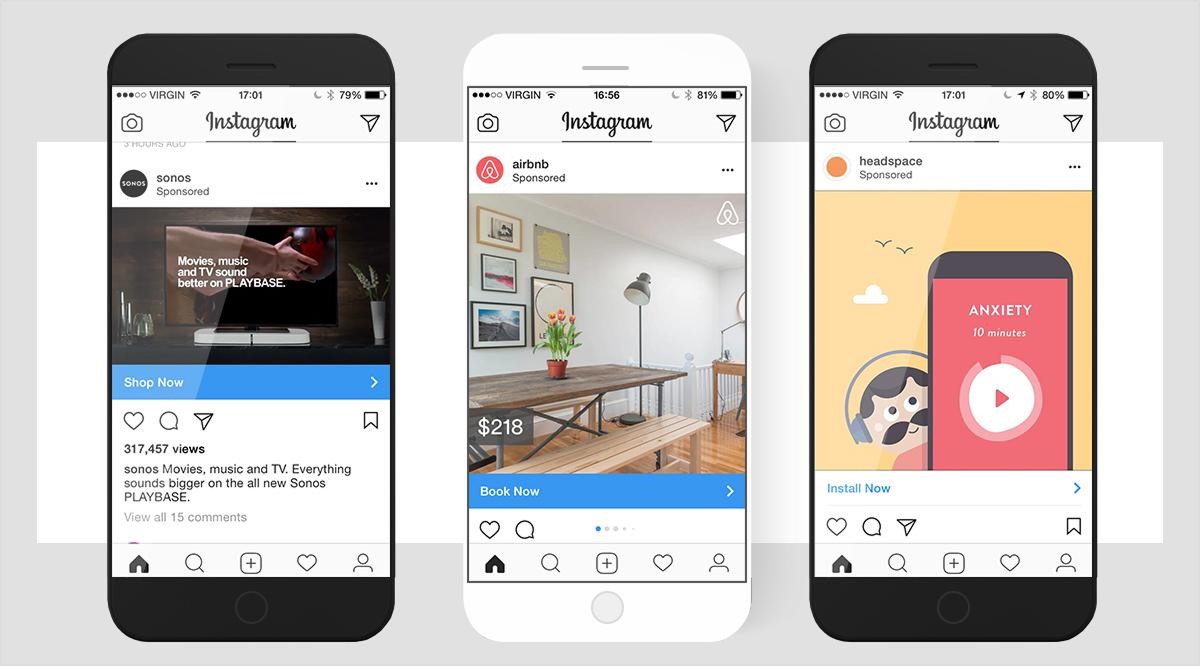
While organic reach is valuable, Instagram’s advertising platform allows you to amplify your message and reach precisely targeted audiences. The key is creating ads that feel native to the platform while driving meaningful business results.
Smart advertising approaches include:
- Promoted posts to extend the reach of your best-performing organic content.
- Targeted campaigns based on detailed demographics, interests, and behaviors.
- Retargeting strategies to re-engage website visitors who didn’t convert.
- Instagram Reels promotion for maximum organic and paid reach potential.
5. Build and nurture your community
The most successful Instagram businesses treat their followers as a community, not just potential customers. Authentic engagement builds loyalty and turns followers into brand advocates who amplify your message organically.
Community-building strategies that work:
- Respond to comments and DMs within hours, not days.
- Partner with micro-influencers who align with your brand values.
- Host regular Instagram Live sessions for direct customer interaction.
- Create branded hashtags that encourage customers to share their experiences.
- Share user-generated content to showcase real customers using your products.
Building a thriving Instagram business presence takes time and consistency, but the platform’s visual nature and engaged user base make it one of the most effective channels for driving both brand awareness and sales.
Also Read: Step-by-step guide to creating a profitable Instagram sales funnel
How to use Instagram for e-commerce?
Instagram has become a major sales channel for e-commerce businesses. Here’s how to maximize your sales potential:
1. Set up Instagram Shopping:
- Connect your Instagram business account to a Facebook catalog.
- Tag products in your posts and Stories.
- Enable shopping on your profile.
- Use product stickers in Stories.
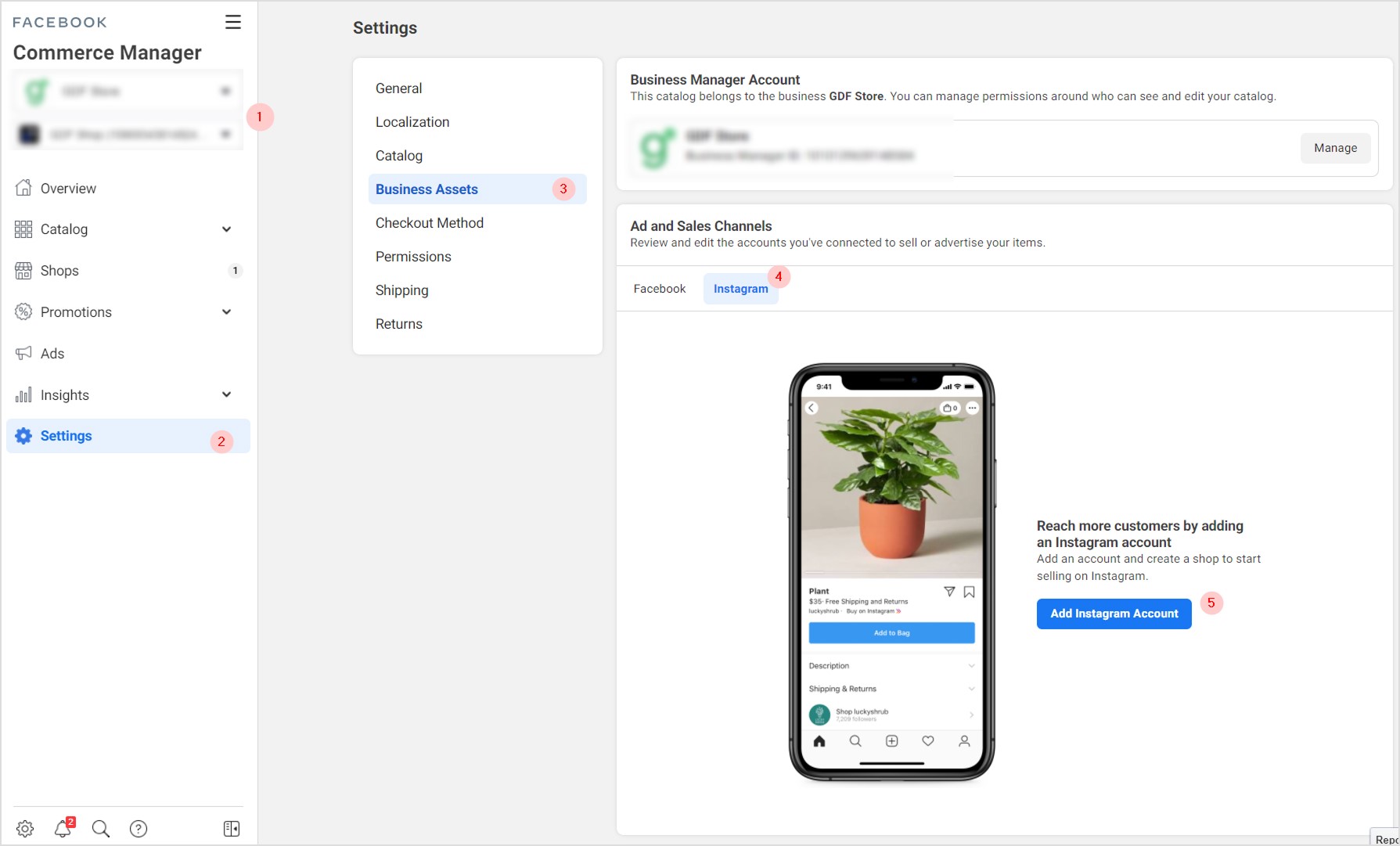
2. Create shoppable content:
- Showcase products in lifestyle settings.
- Use carousels to show multiple product angles.
- Share user-generated content featuring your products.
- Create how-to content demonstrating product use.
3. Optimize for conversions:
- Use clear calls-to-action in your captions.
- Create urgency with limited-time offers.
- Share customer reviews and testimonials.
- Use Instagram Stories to highlight new arrivals and sales.
4. Track performance:
- Monitor which products get the most engagement.
- Track click-through rates from Instagram to your website.
- Analyze which content types drive the most sales.
- Use Instagram insights to understand your audience better.
The following image depicts an example of how the user sees products on Instagram Shop:
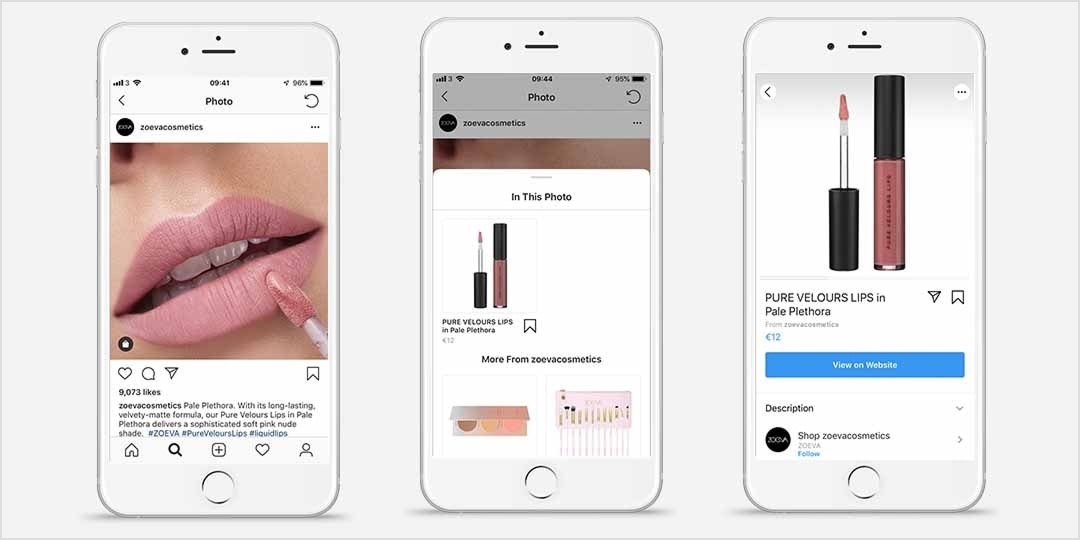
How to use and manage Instagram with ContentStudio?
Consistency is key to Instagram success, but manually posting content every day can be time-consuming. This is where ContentStudio’s Instagram scheduler makes it easy to plan and automate your Instagram strategy.
Benefits of using ContentStudio for Instagram:
- Schedule Instagram posts, Reels, and Stories in advance.
- Plan your content calendar weeks or months ahead.
- Maintain consistent posting even when you’re busy.
- Access detailed analytics to track performance.
- Manage multiple Instagram accounts from one dashboard.
Also read: How to post to all social media platforms at once? (4 easy steps)
How to schedule Instagram content using ContentStudio?
Using ContentStudio to schedule and post Instagram content is quick and easy:
- Connect your Instagram account: Link your Instagram account to ContentStudio either directly or through your Facebook account.
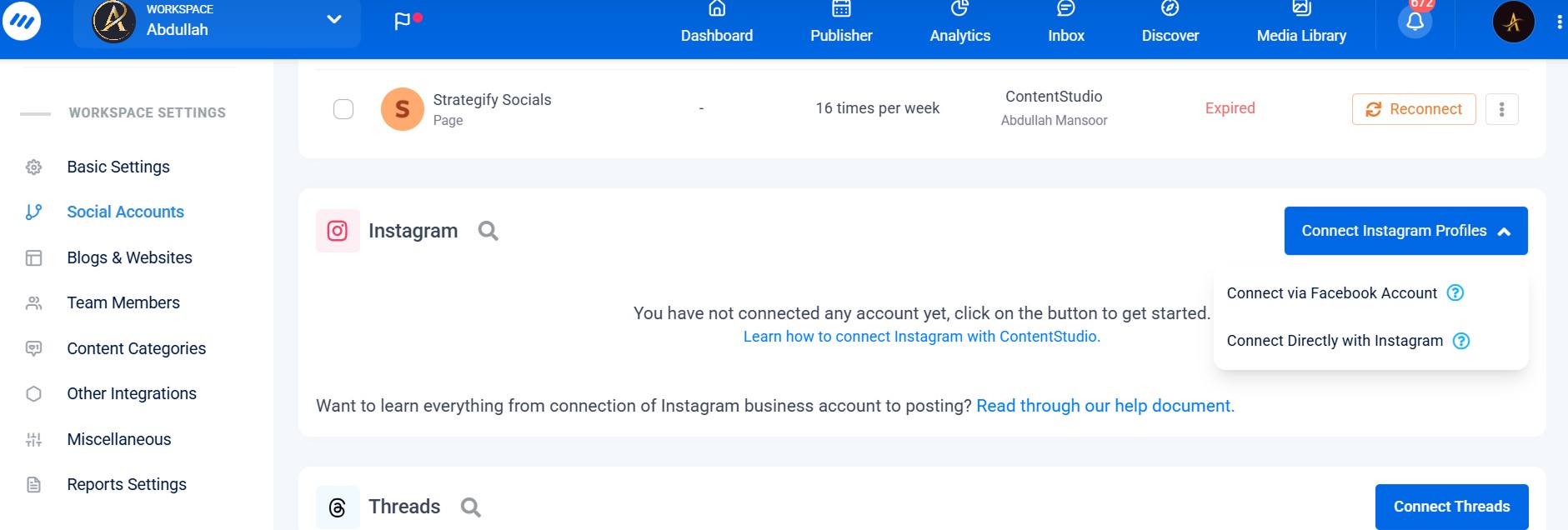
- Plan your content: Use the visual calendar to plan posts for optimal timing.
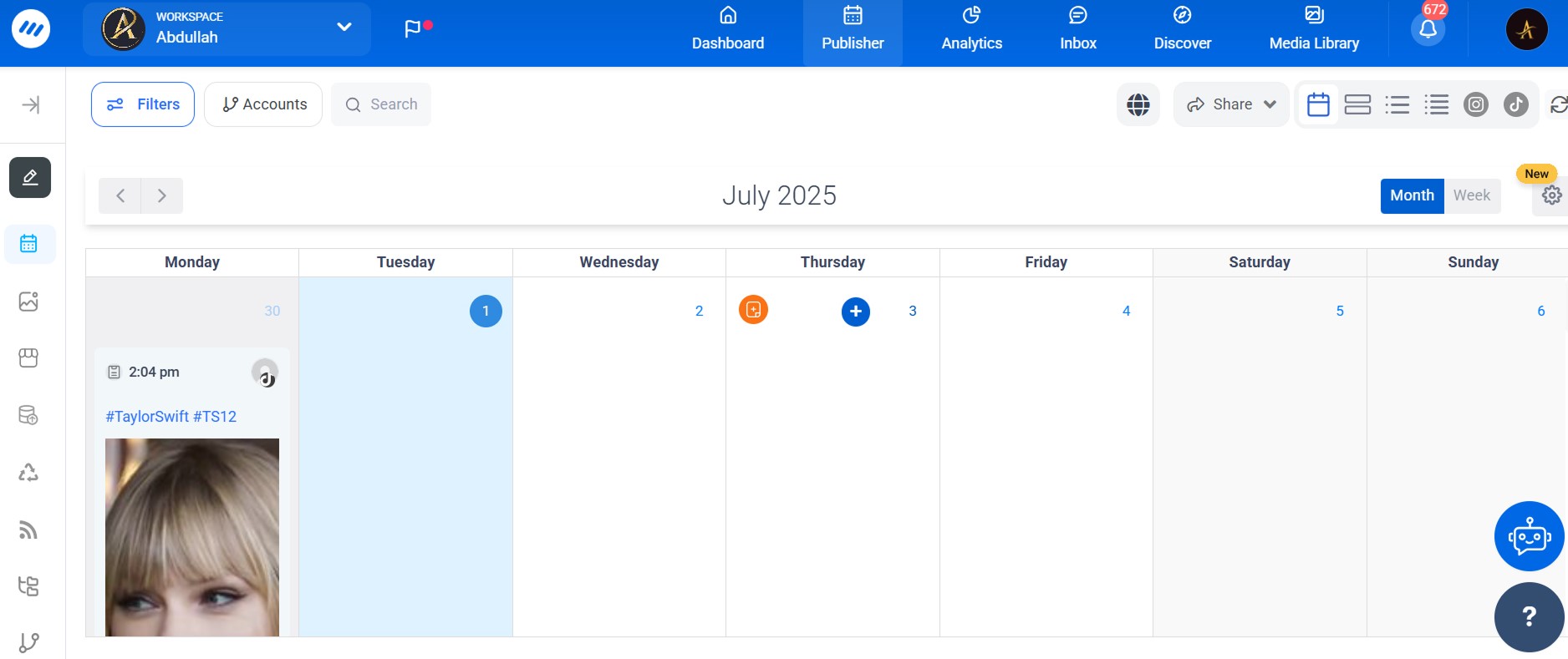
- Create and schedule posts: Upload images, write captions, and schedule posts as per the best times to post on Instagram.
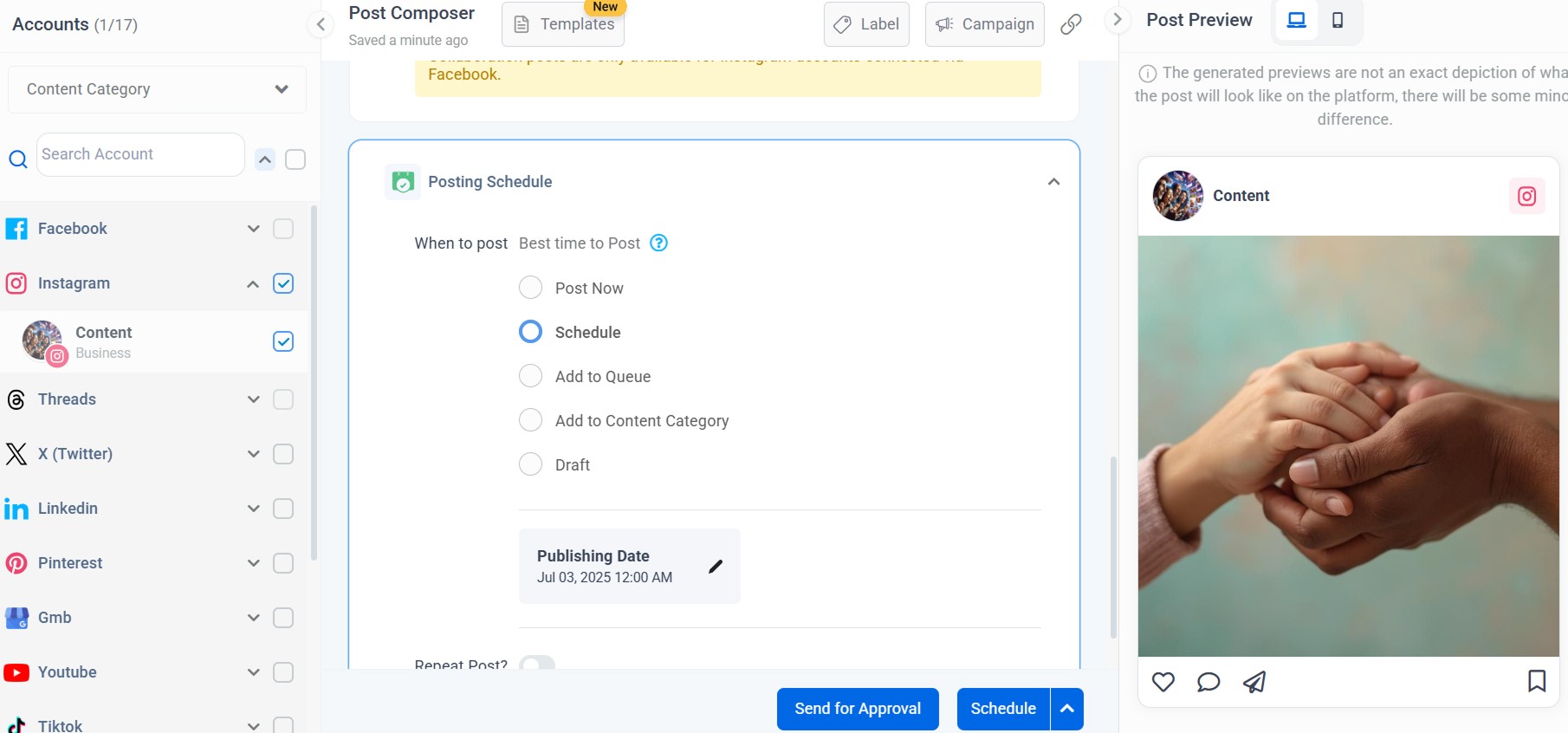
- Monitor performance: Track engagement, reach, and follower growth with built-in analytics.
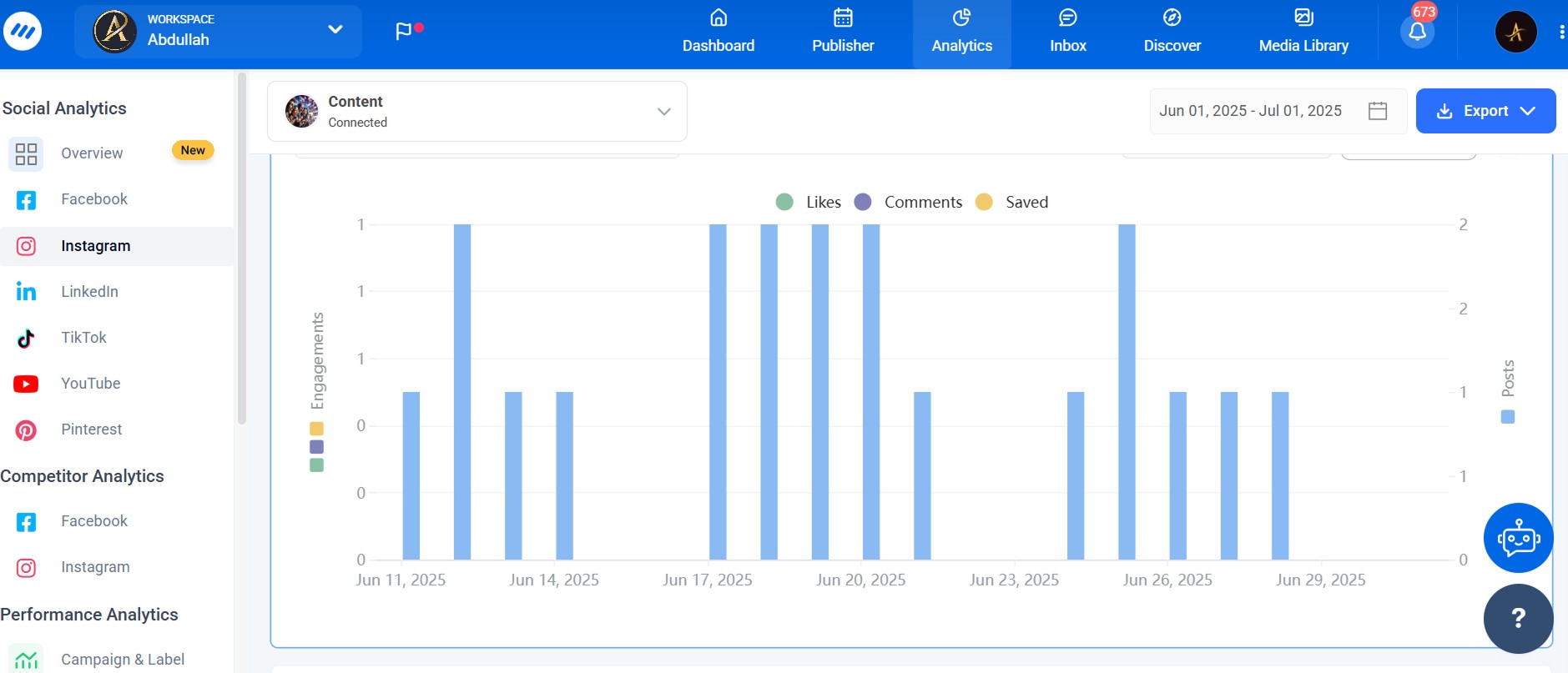
- Optimize your strategy: Use insights to refine your content and posting schedule.
Free ContentStudio’s tools for Instagram
Here are some free tools and features you can get in ContentStudio to further improve your presence on Instagram:
- Instagram competitor analytics to spy on competitor strategies.
- AI-powered Instagram caption generator for engaging copy.
- Instagram hashtag generator to find trending hashtags.
- Instagram bio generator to generate compelling bios.
Conclusion
Instagram continues to be one of the most versatile and powerful social media platforms available in 2025. Whether you’re using Instagram for personal connection, creative expression, or business growth, understanding its features and best practices is essential for success.
The key to Instagram success lies in understanding your audience, experimenting with different content types, and maintaining a consistent posting schedule. With the strategies and tools outlined in this guide, you’re well-equipped to make the most of everything Instagram has to offer.
Ready to take your Instagram strategy to the next level? Try ContentStudio’s free trial and discover how easy it is to plan, schedule, and analyze your Instagram content like a pro.
With powerful scheduling tools, in-depth analytics, and AI-powered content creation features, ContentStudio helps you grow your Instagram presence efficiently and effectively.
Also Read: 15 most common Instagram mistakes to avoid in 2025
FAQs
How much does it cost to use Instagram?
Instagram is completely free to download and use. There are no subscription fees for basic features like posting, following accounts, or messaging. However, businesses can choose to pay for advertising and promoted posts to reach larger audiences.
Can I use Instagram without a phone number?
Yes, you can create an Instagram account using just an email address. While Instagram may ask for a phone number for security purposes, it’s not always required during the initial signup process.
What’s the difference between Instagram and Facebook?
While both platforms are owned by Meta, Instagram focuses on visual content (photos and videos) while Facebook emphasizes text-based posts and longer-form content. Instagram tends to have a younger demographic and higher engagement rates for visual content.
Can I schedule Instagram posts for free?
While Instagram doesn’t offer native scheduling for all content types, third-party tools like ContentStudio provide comprehensive scheduling features. You can get a free trial to get started.
How often should I post on Instagram?
Consistency is more important than frequency. Most successful accounts post 3-7 times per week, but the key is maintaining a regular schedule that you can sustain long-term. Quality content posted consistently will always outperform sporadic high-volume posting.
Recommended for you
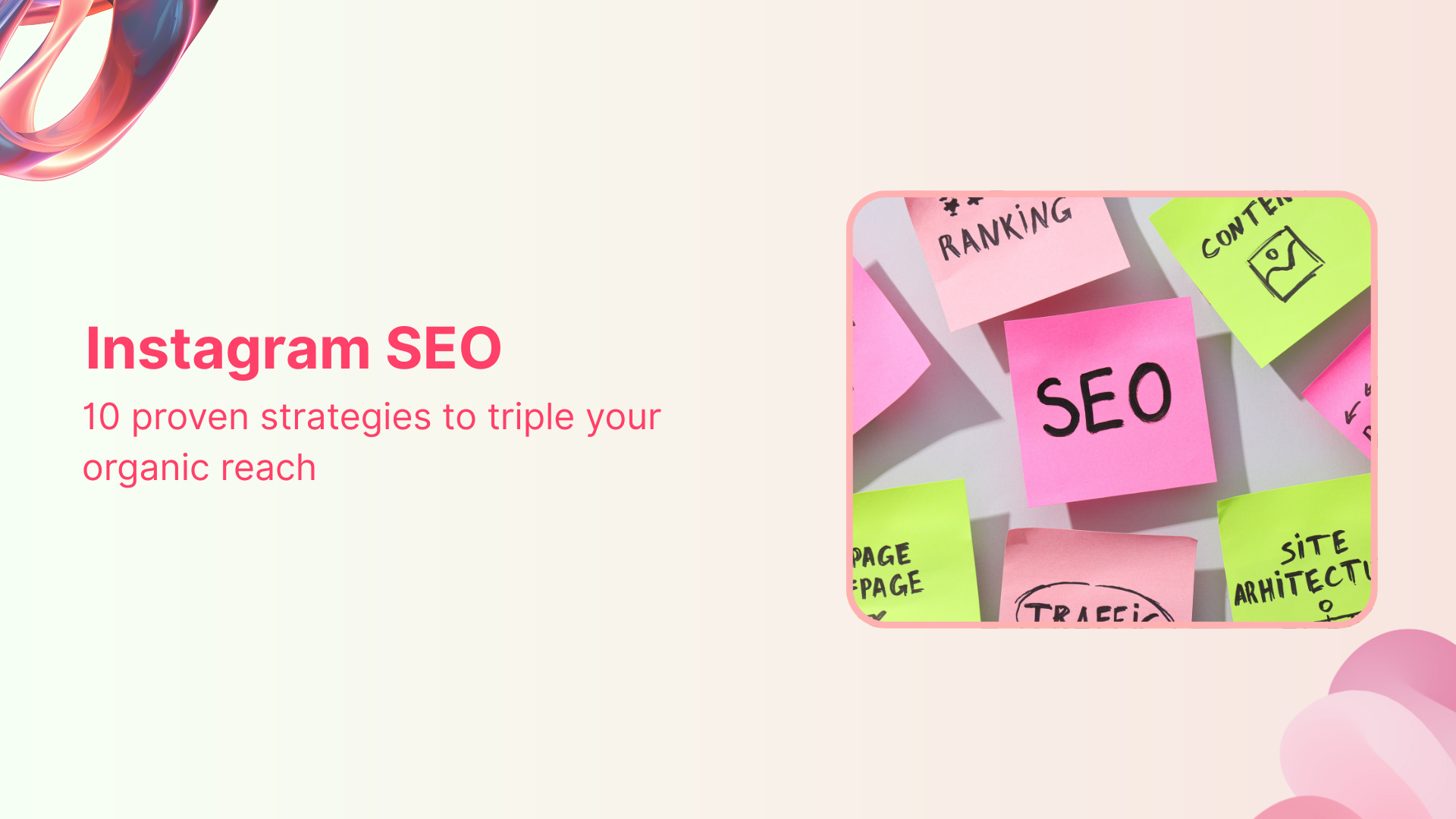
Instagram SEO: 10 proven strategies to triple your organic reach


Powerful social media management software
14-day free trial - No credit card required.
